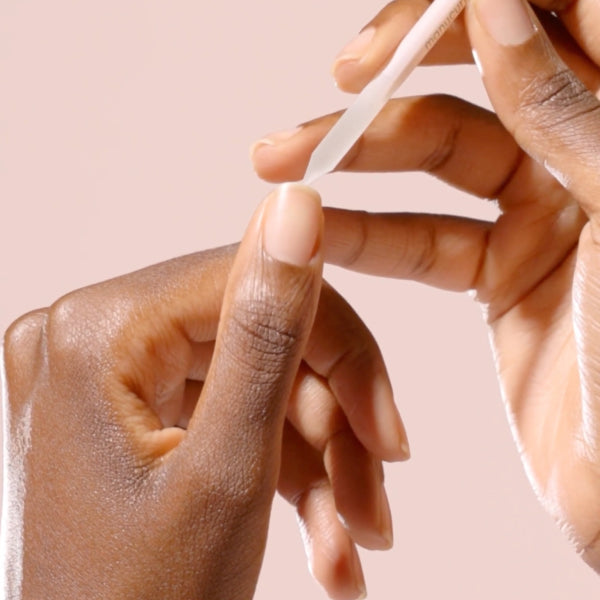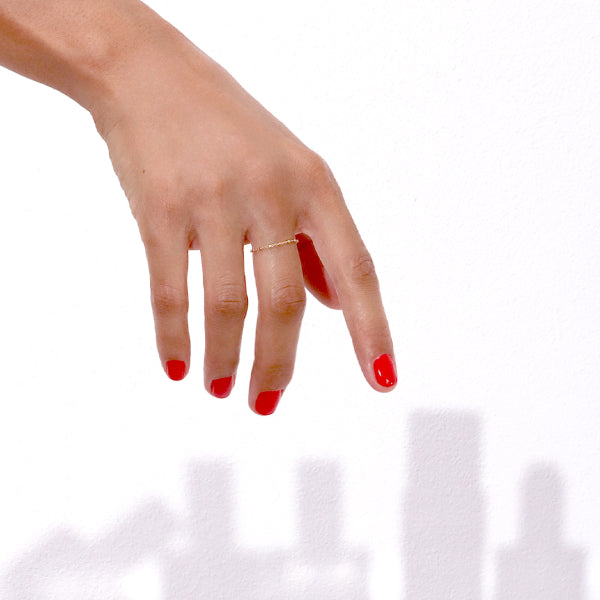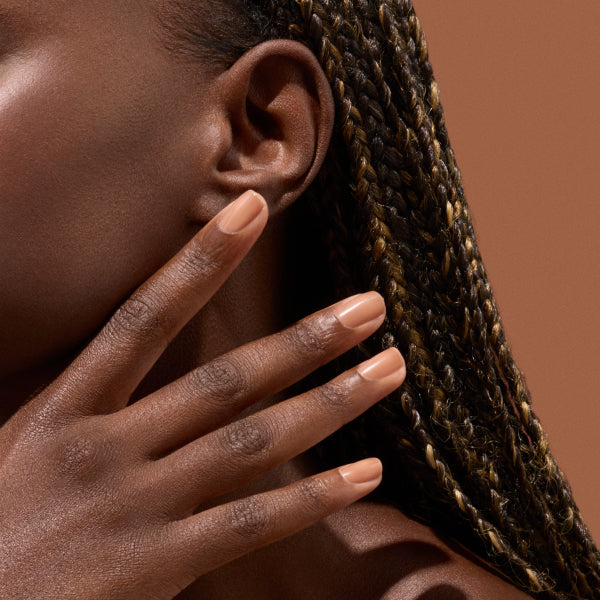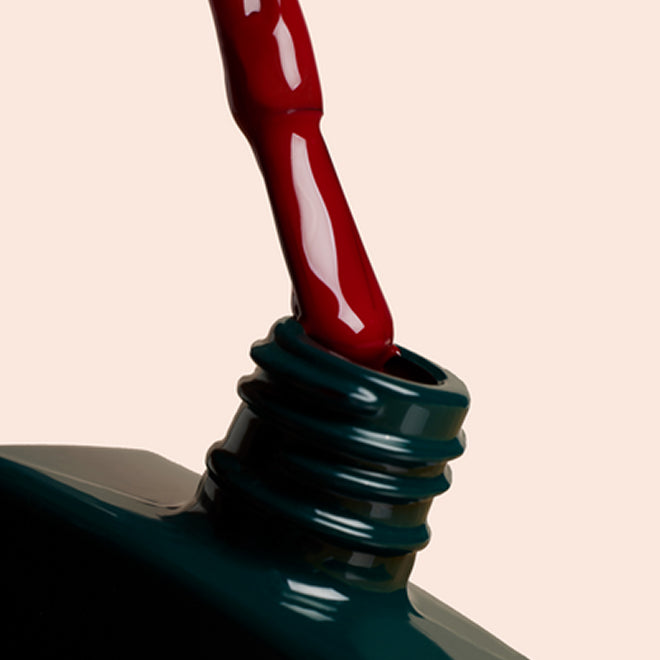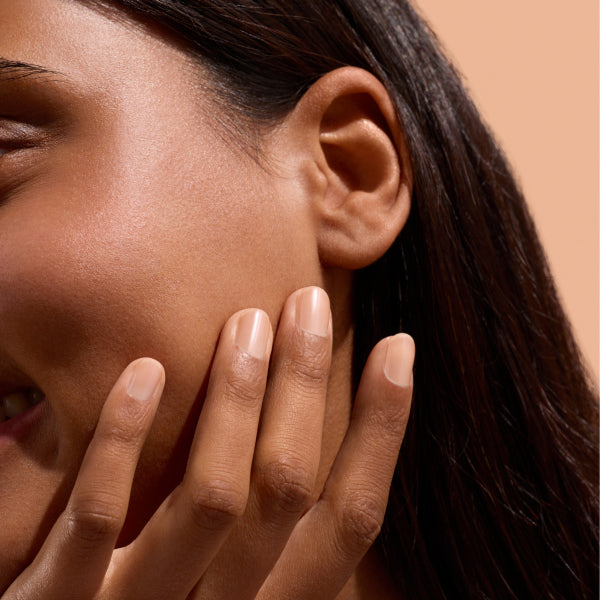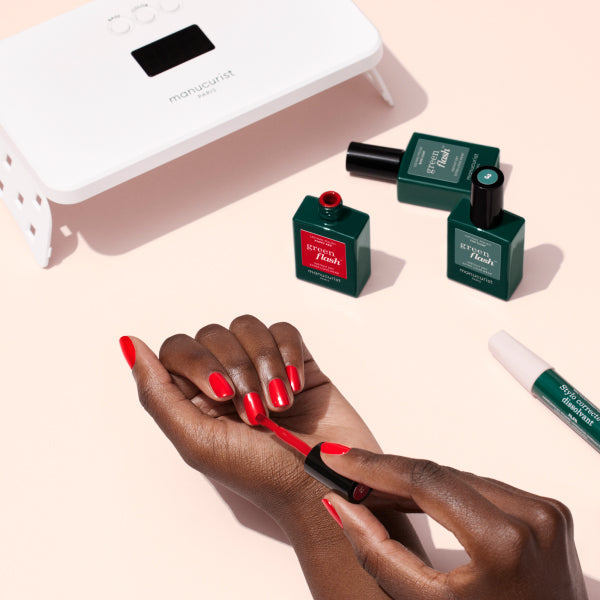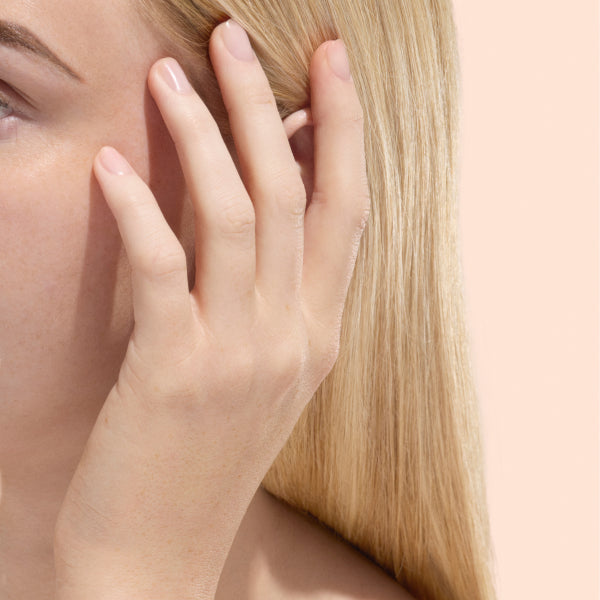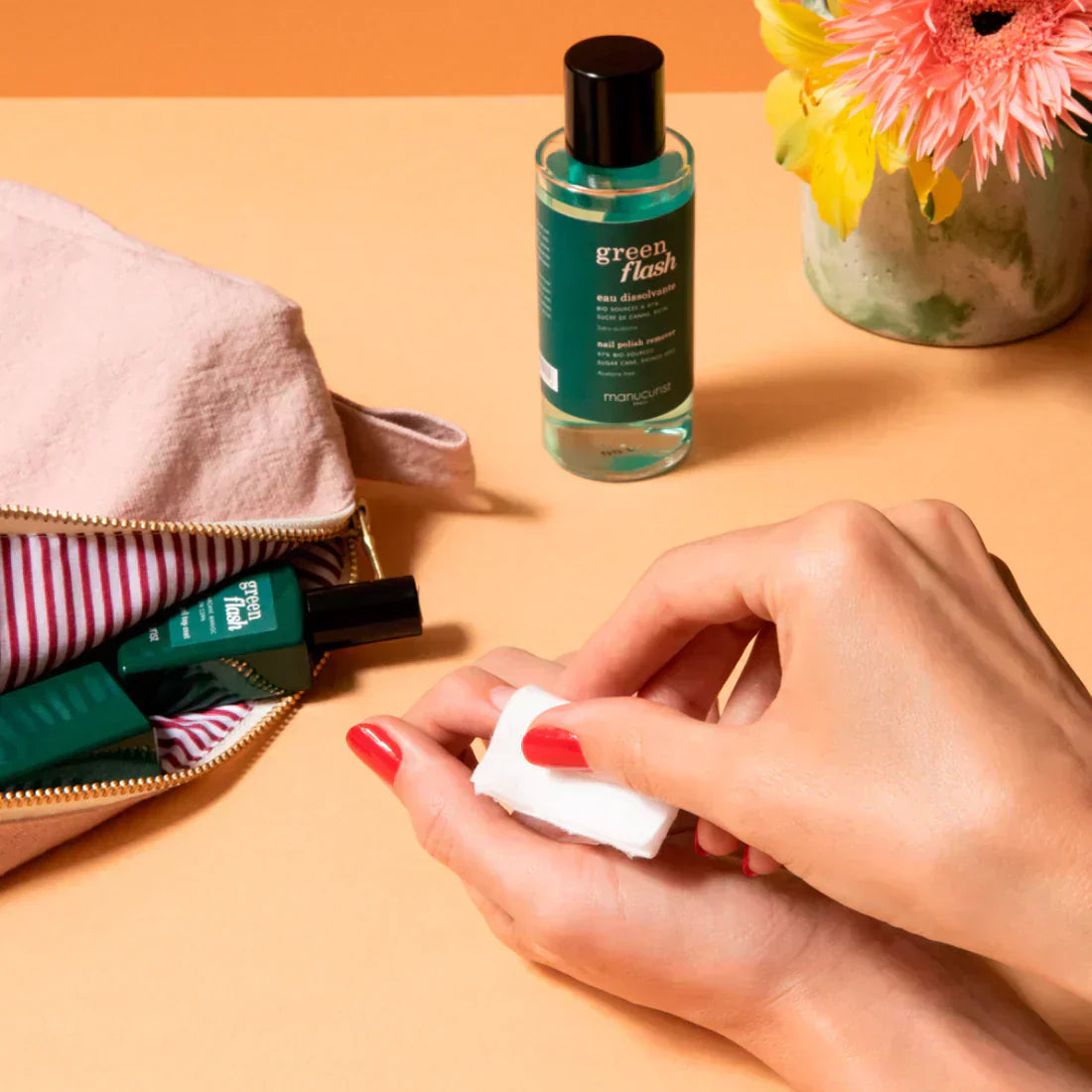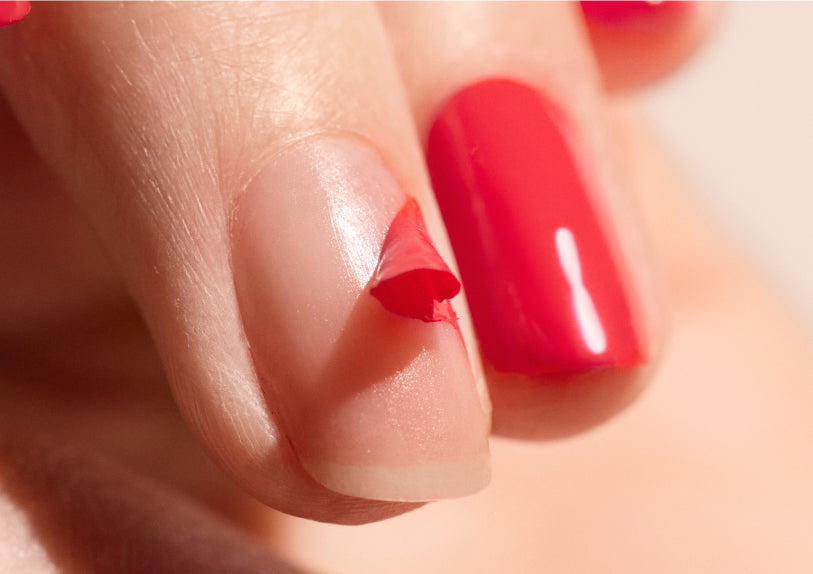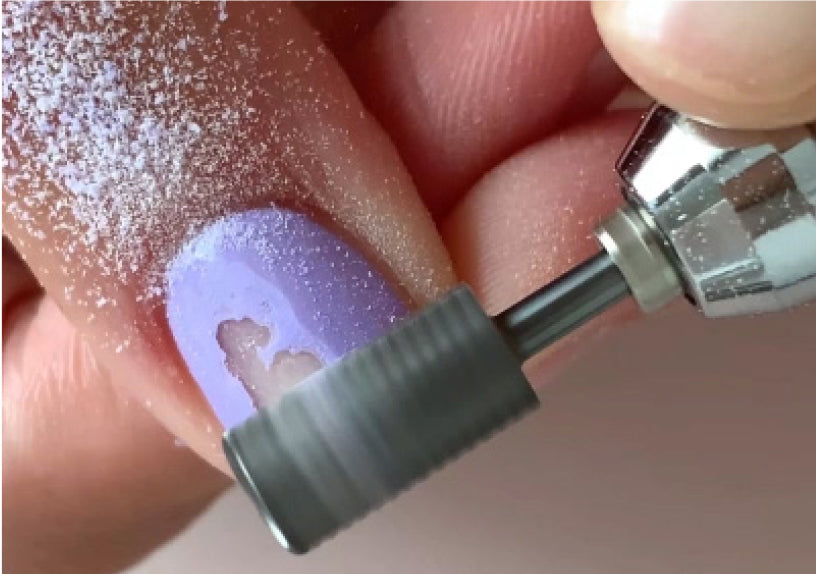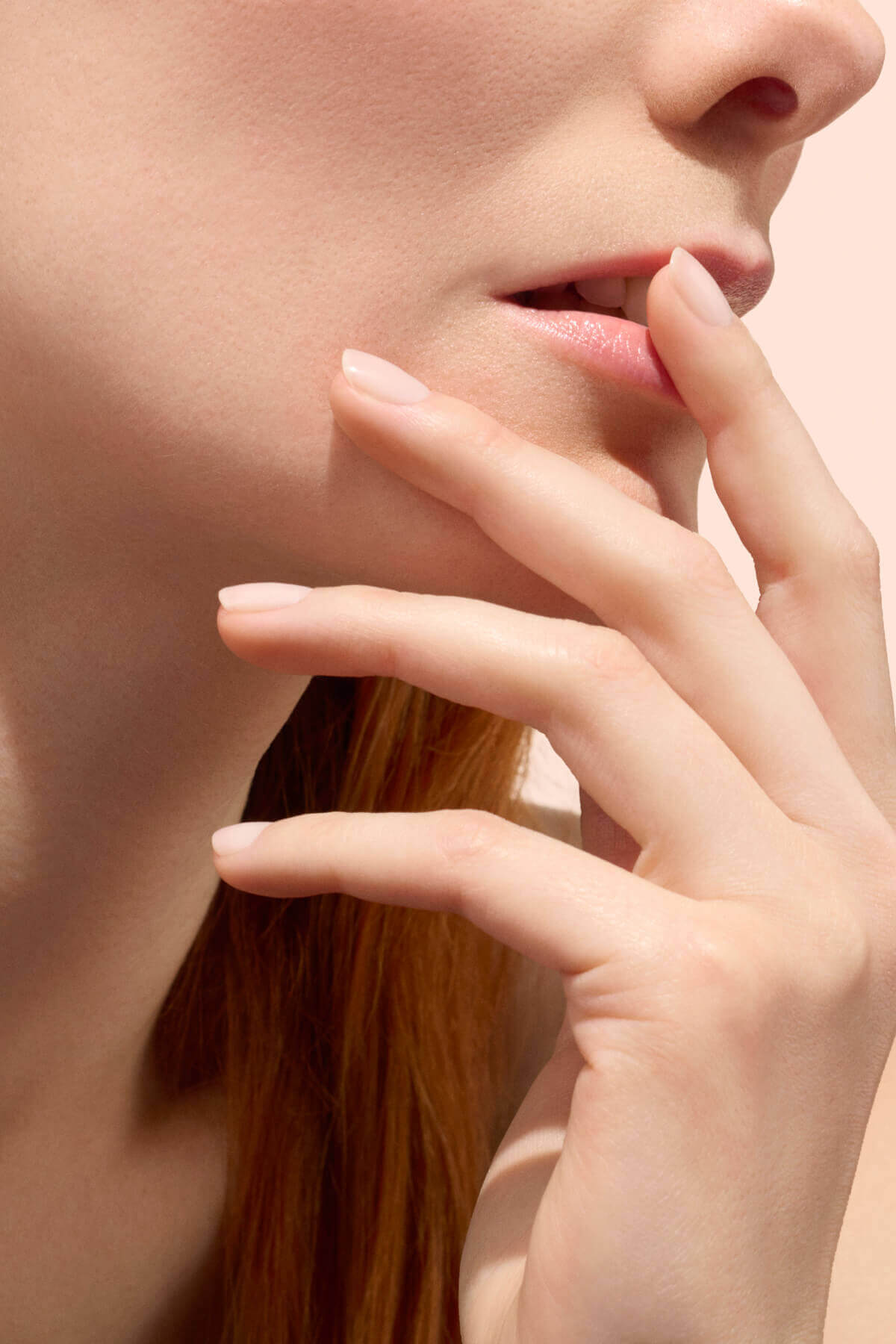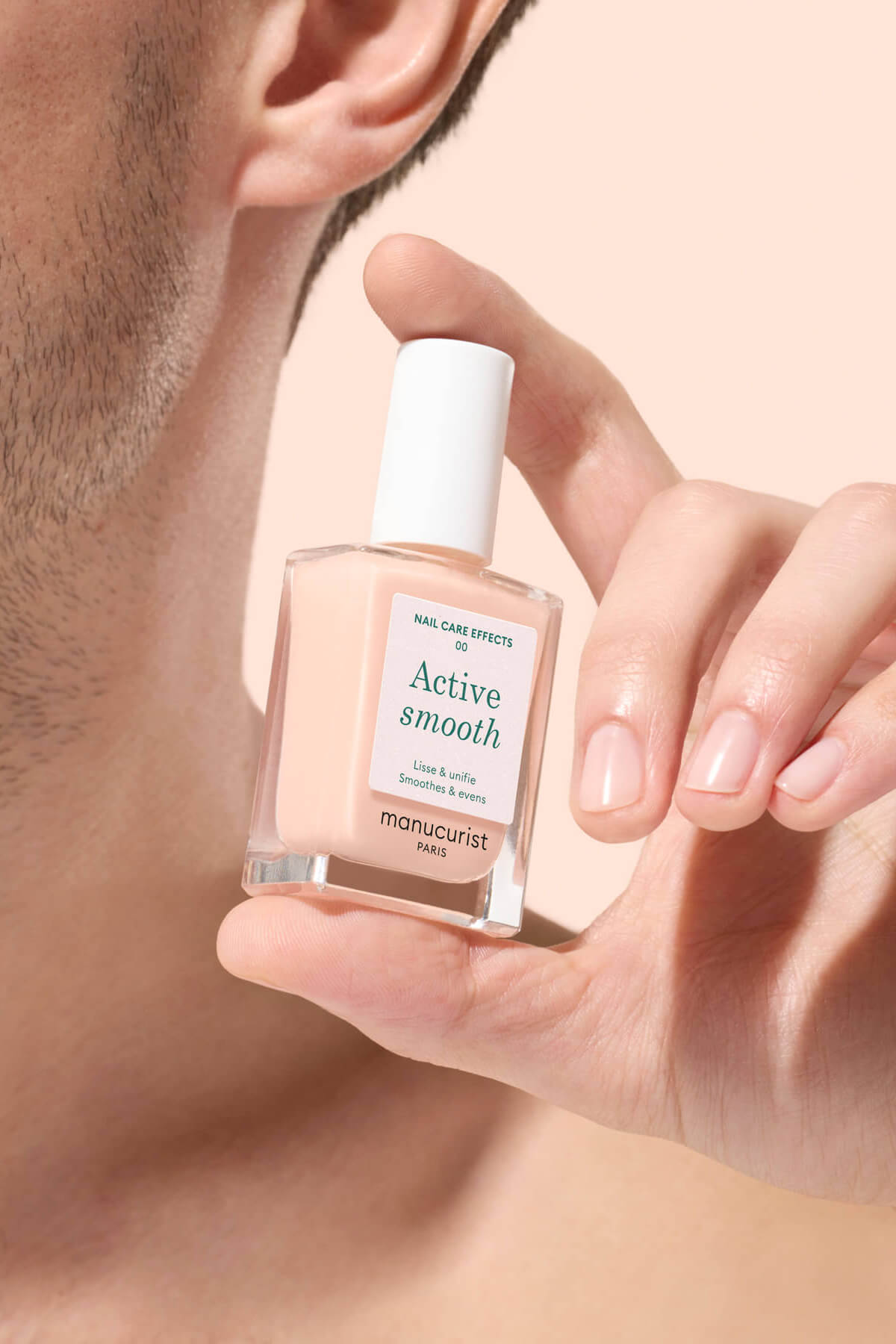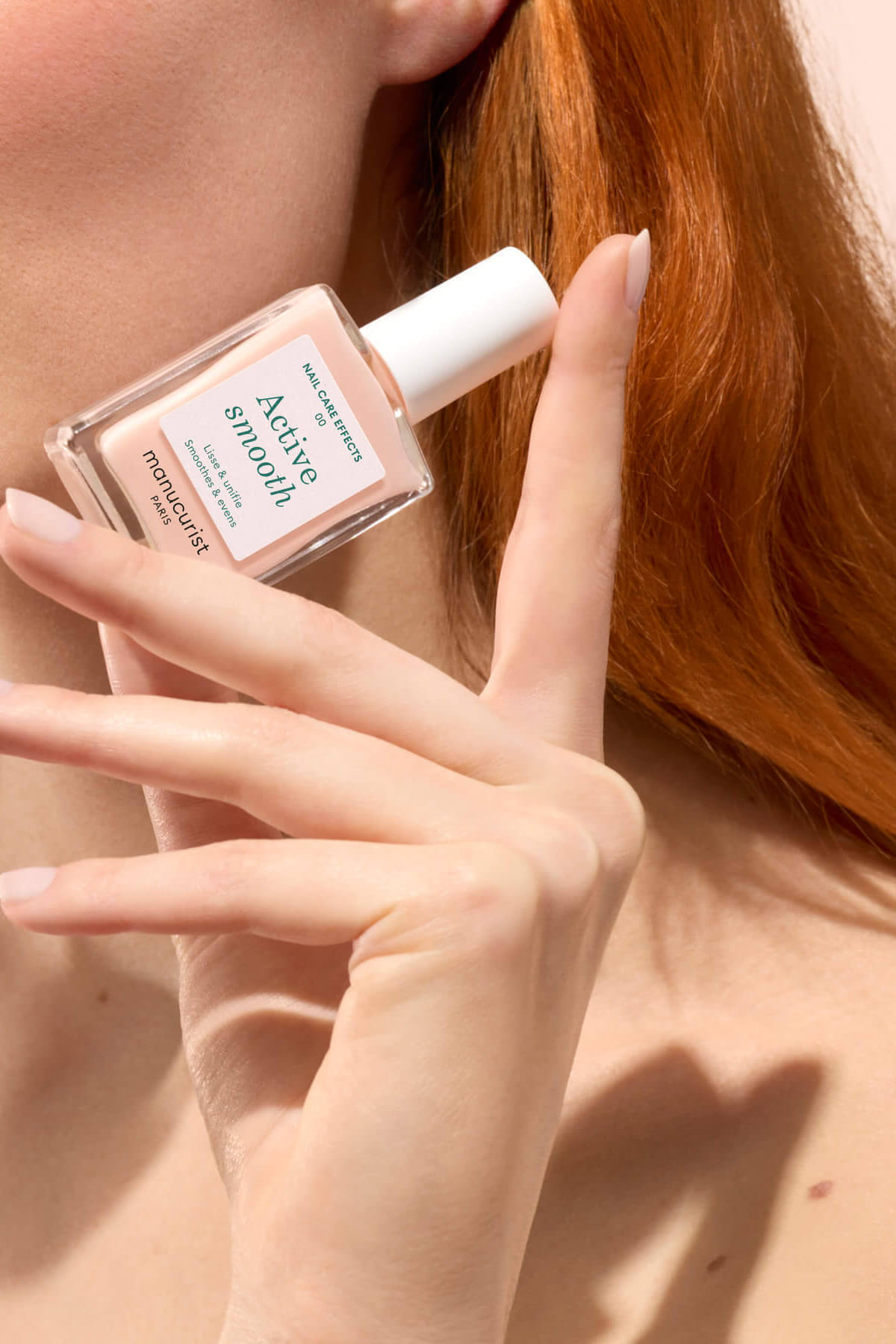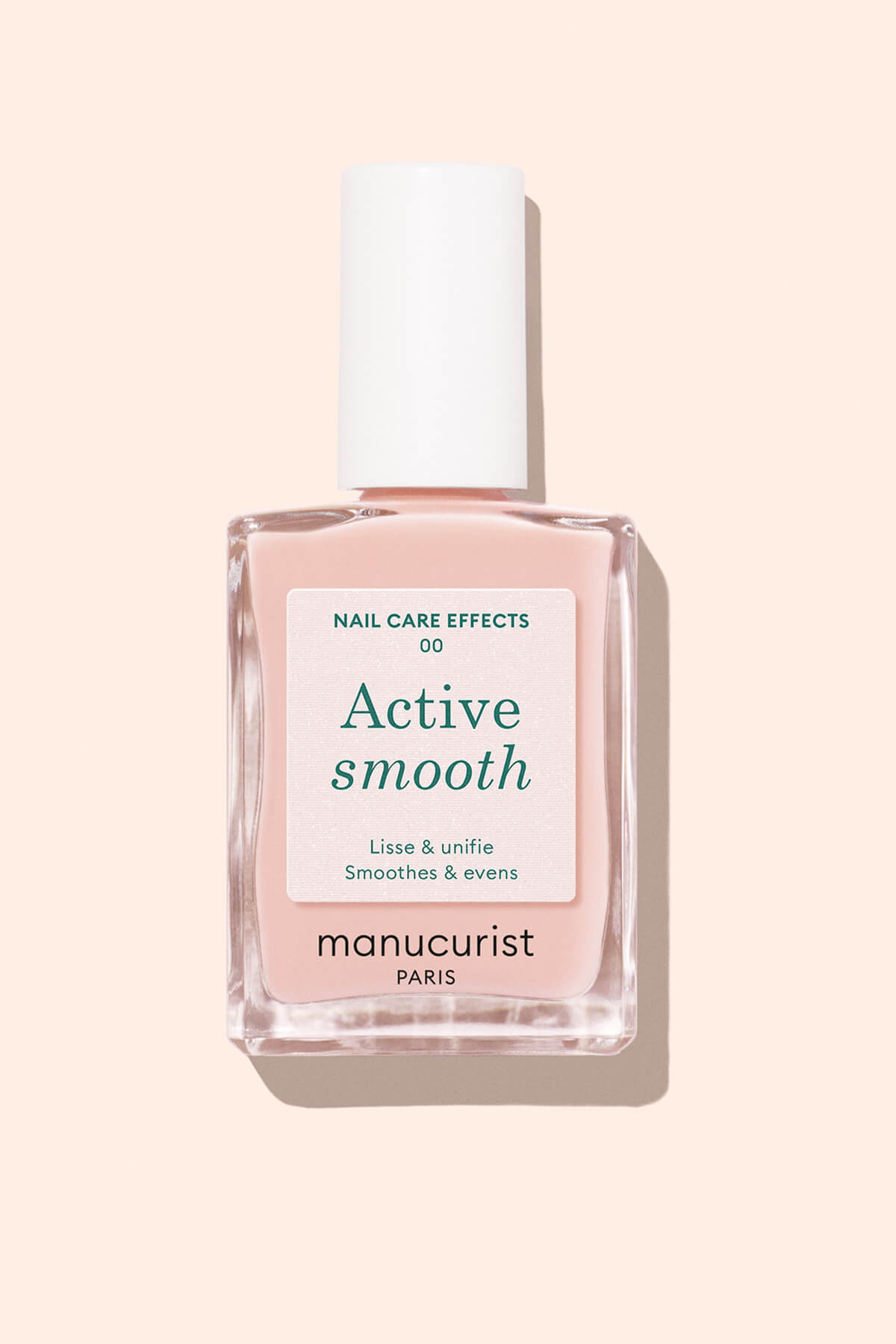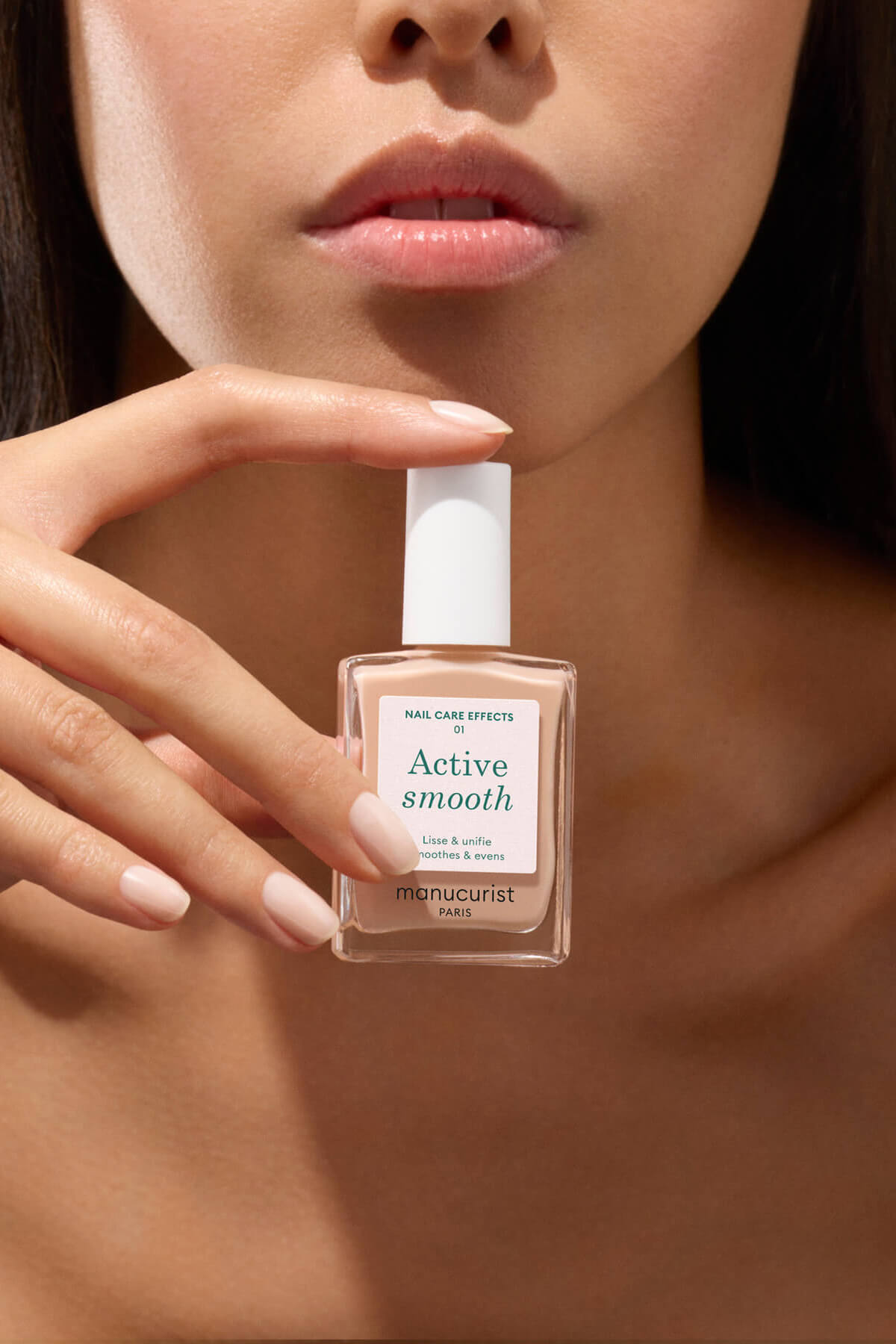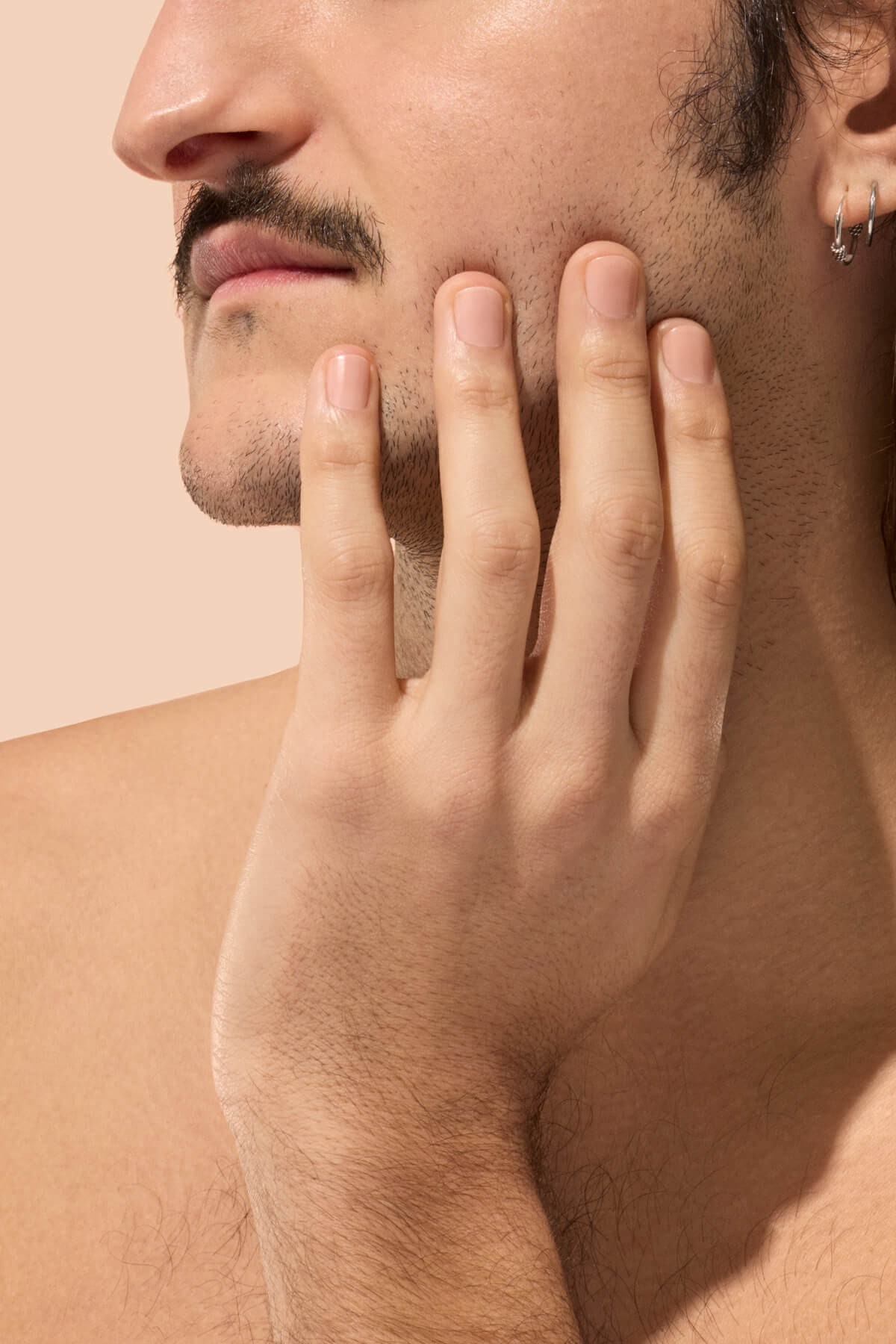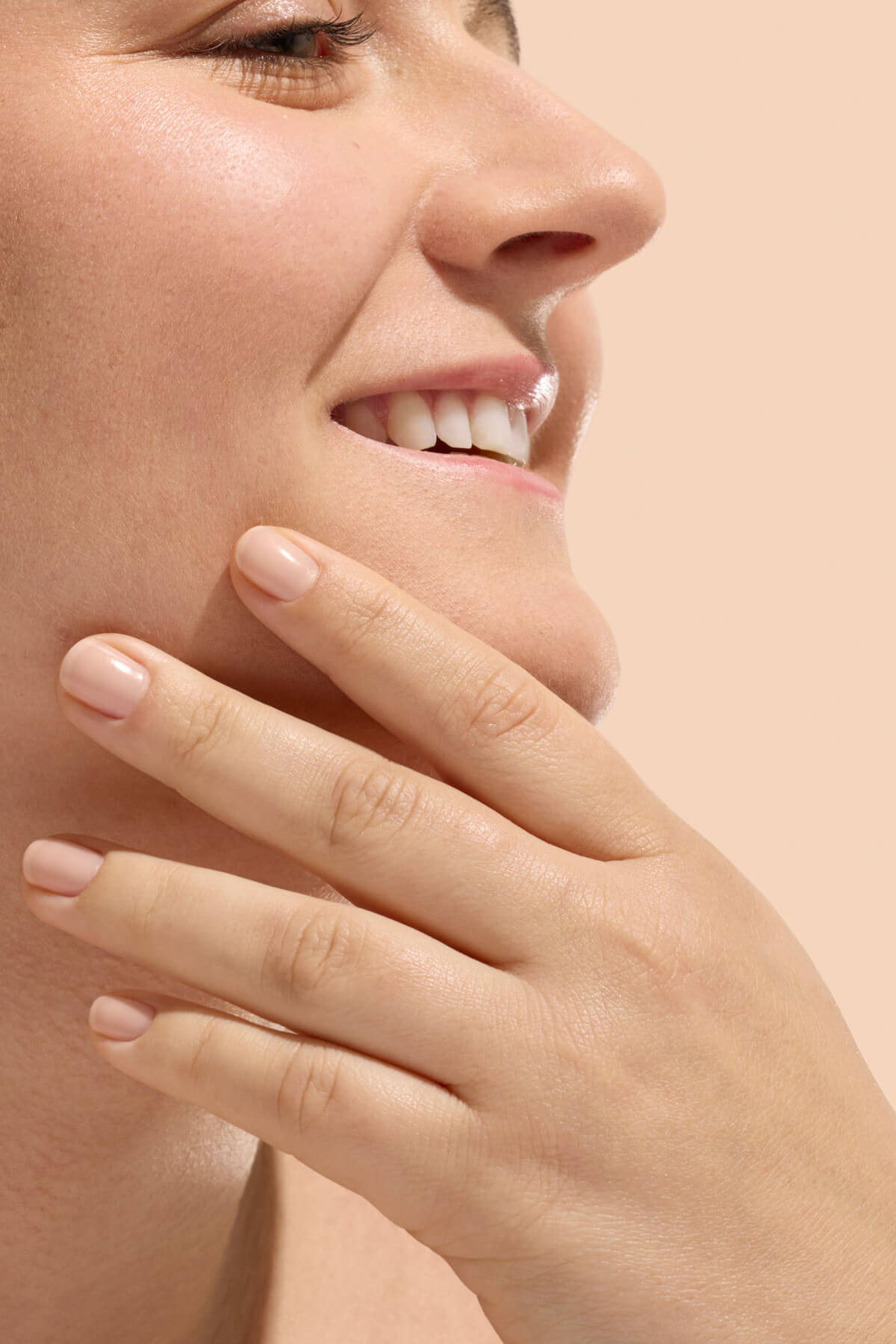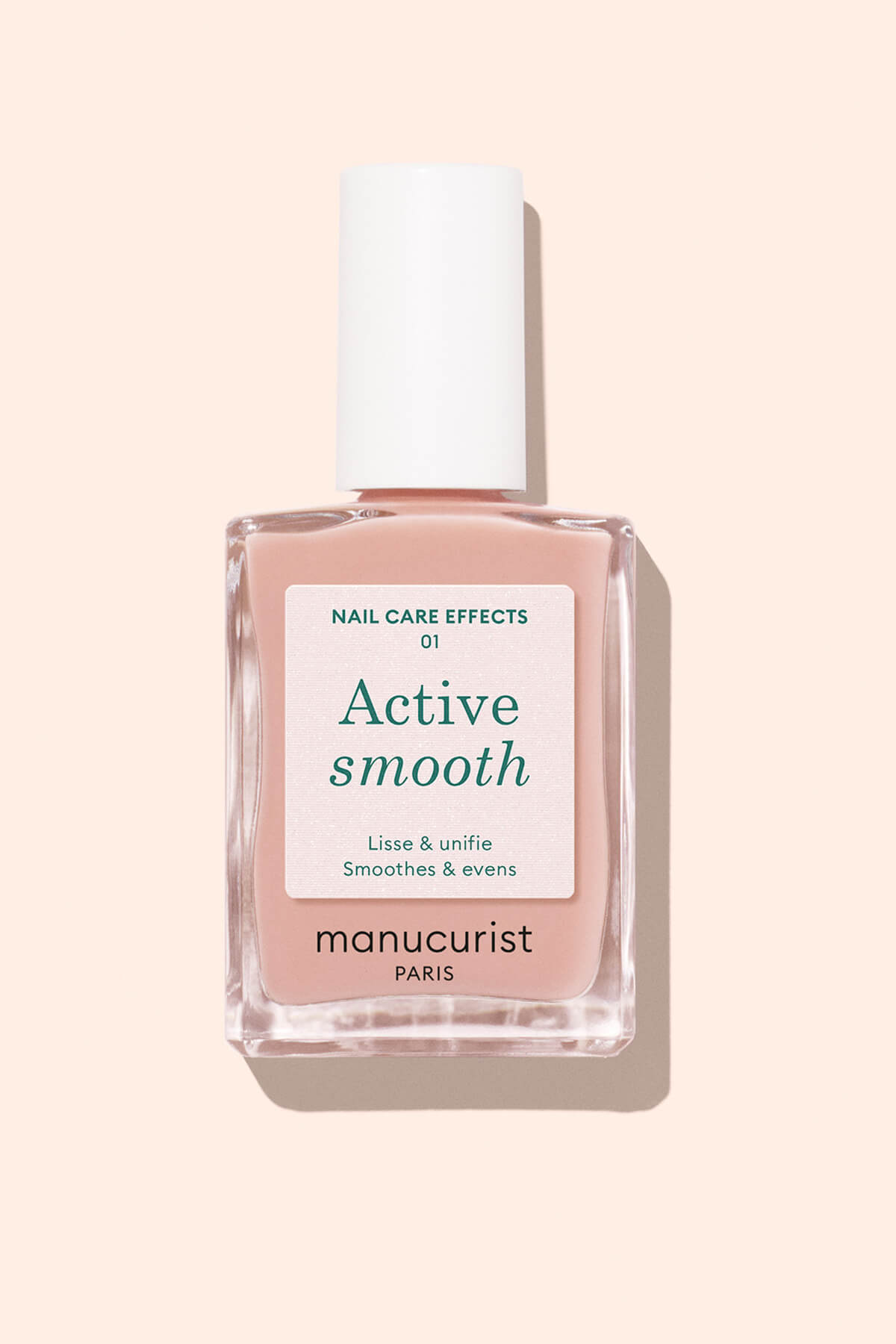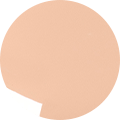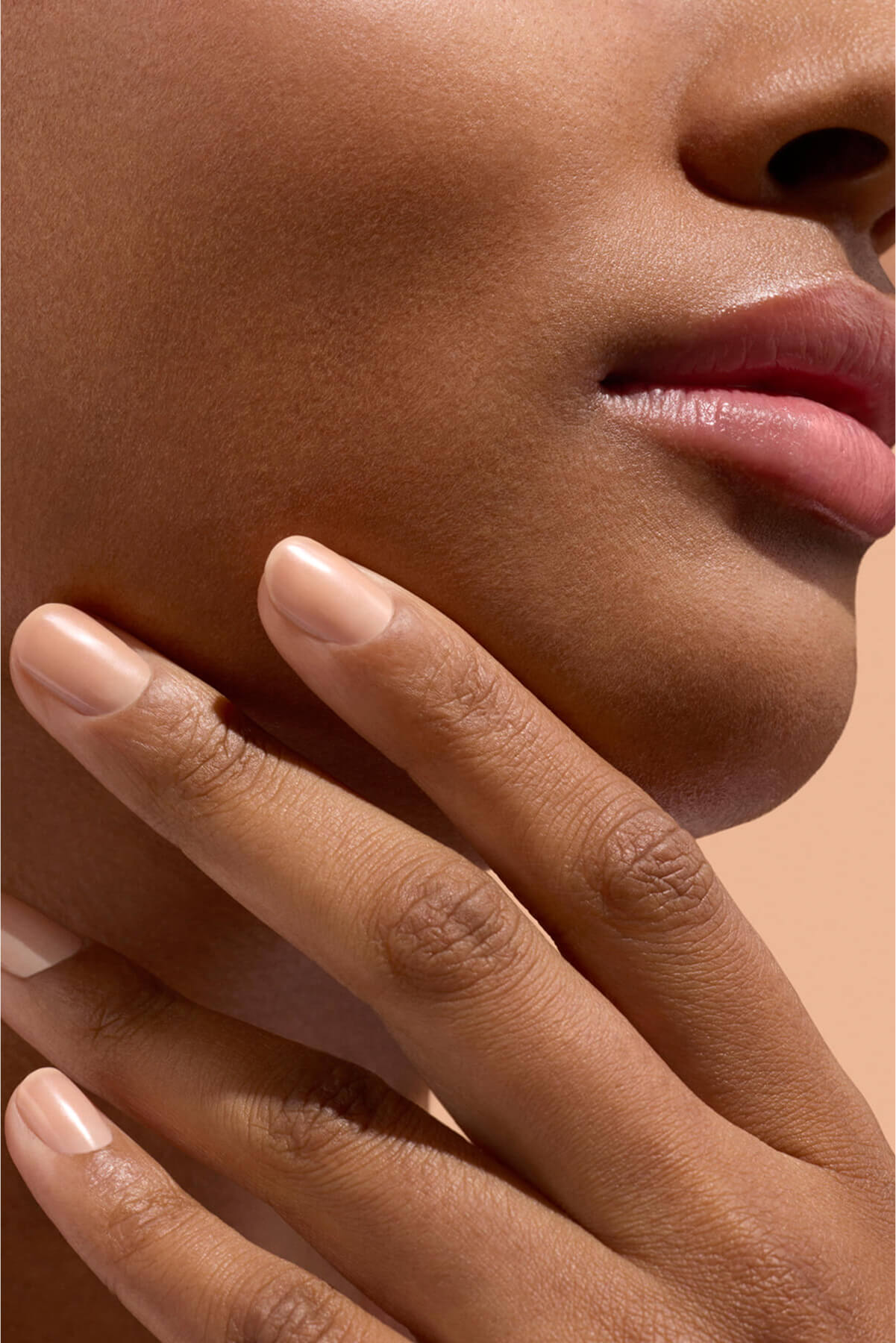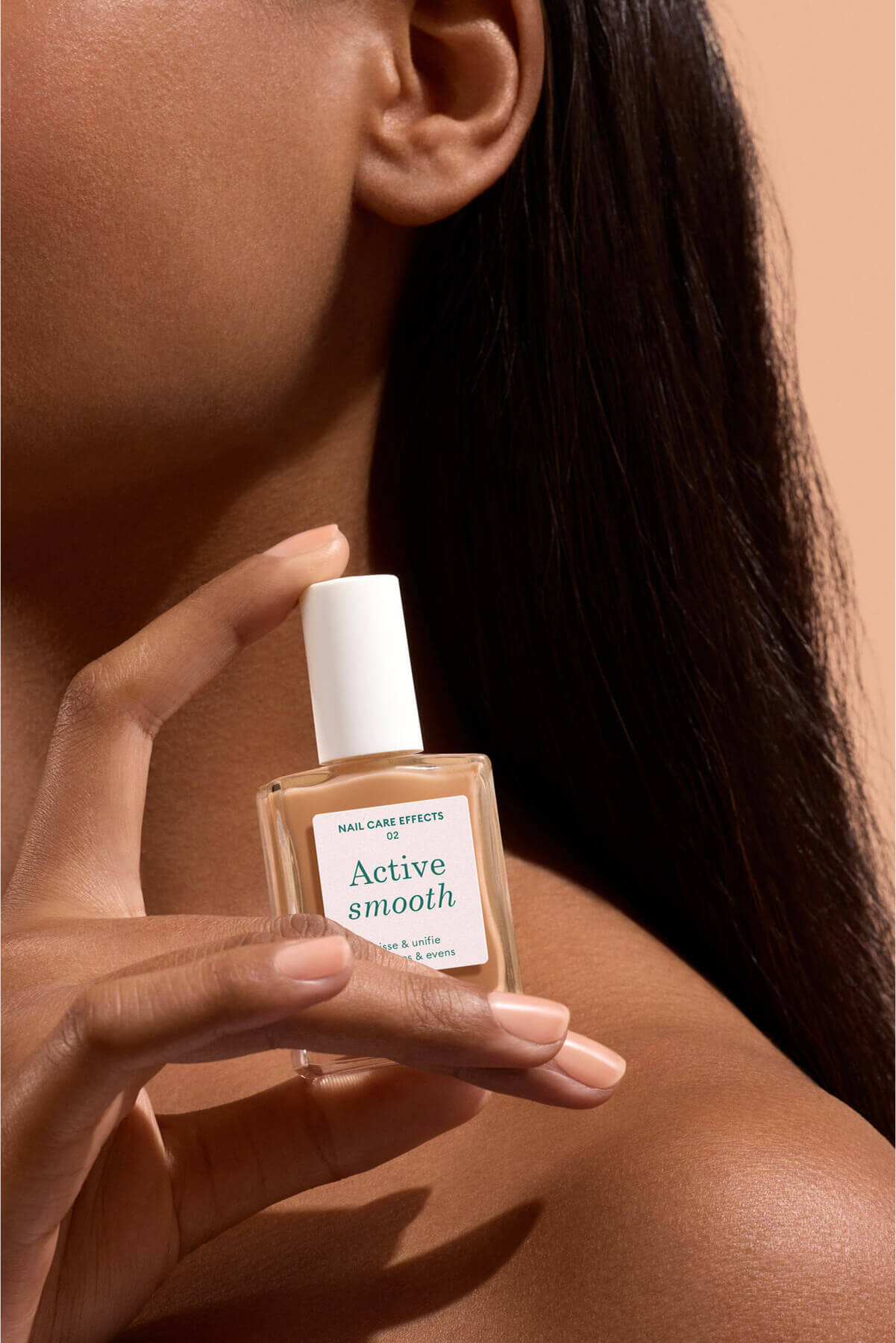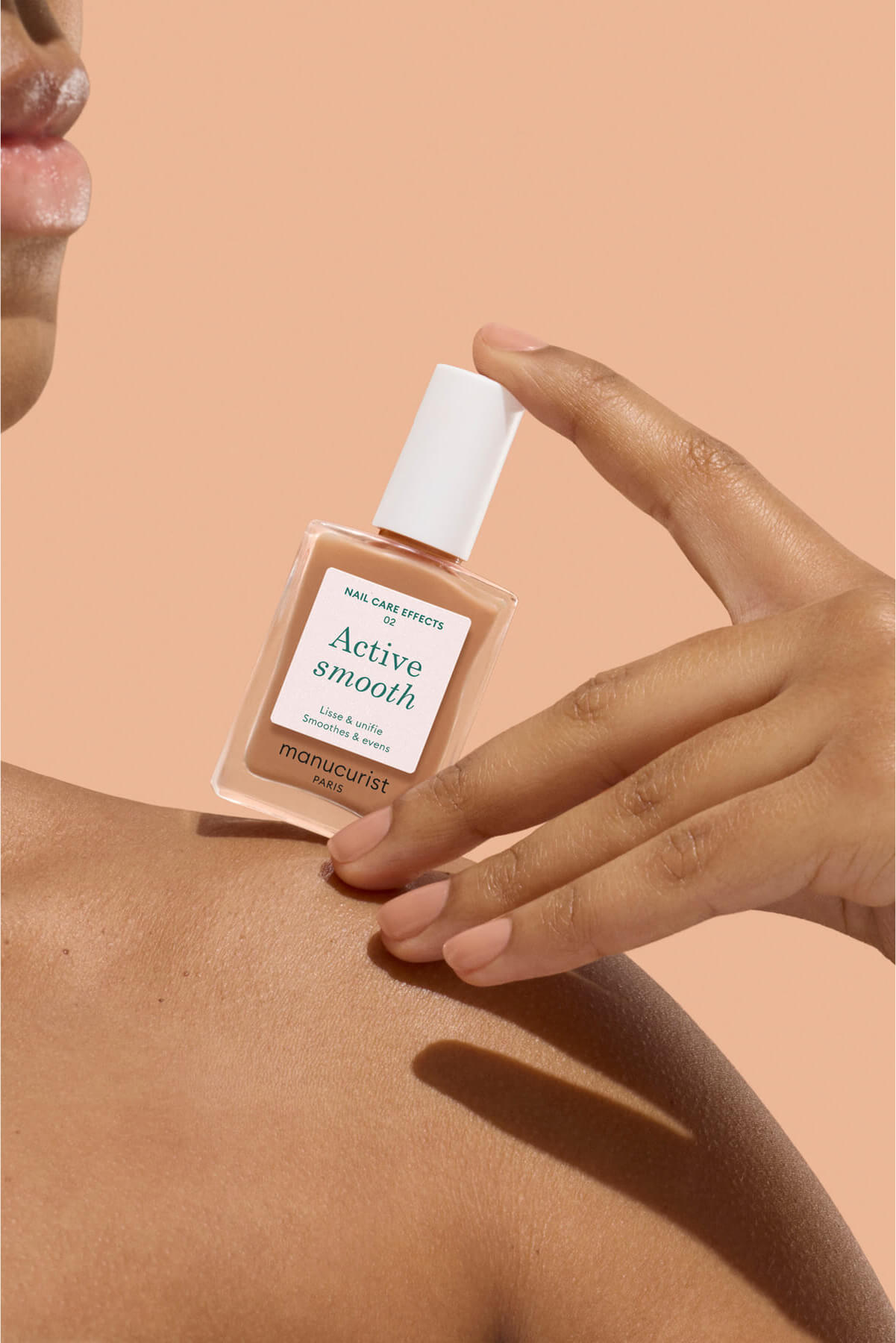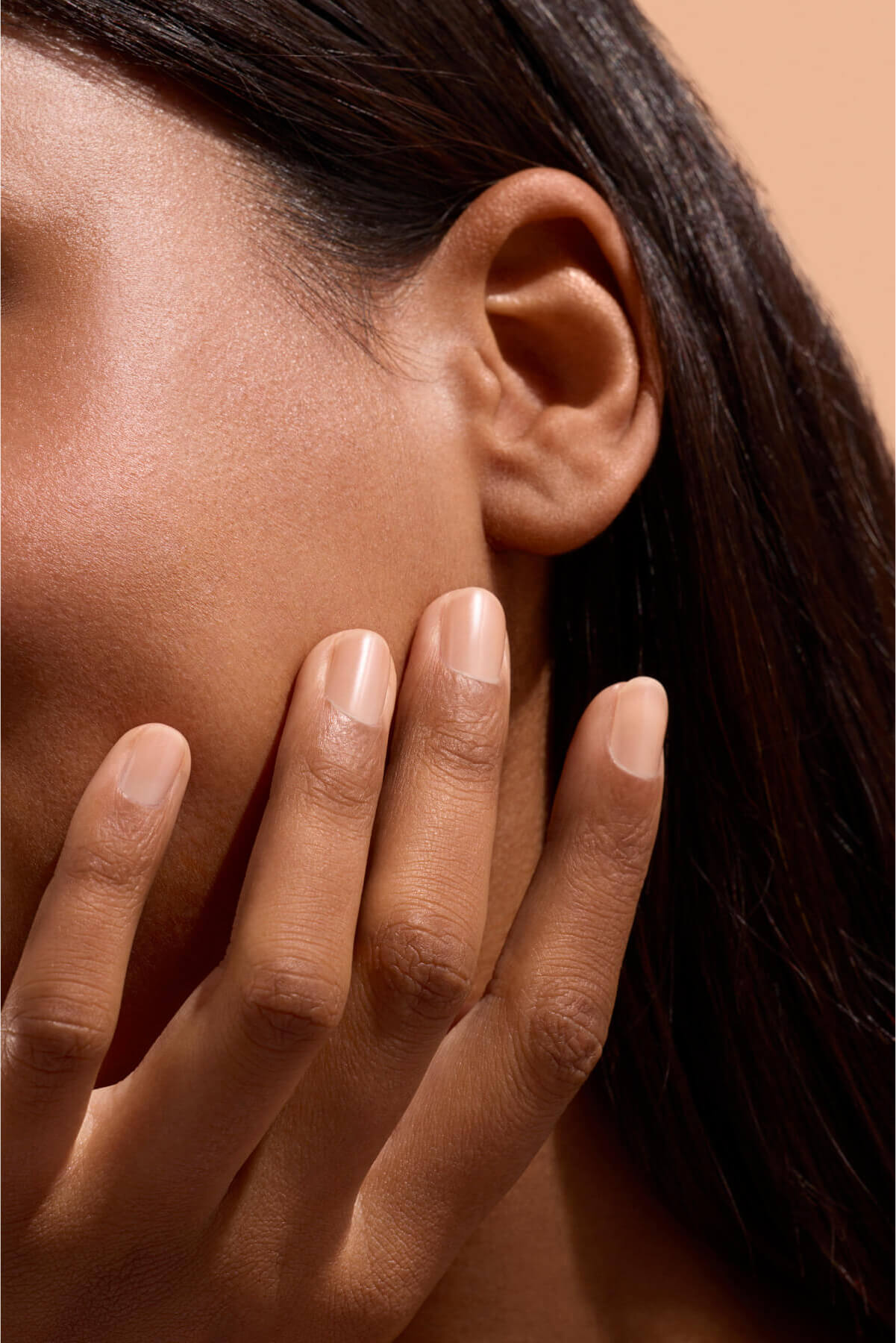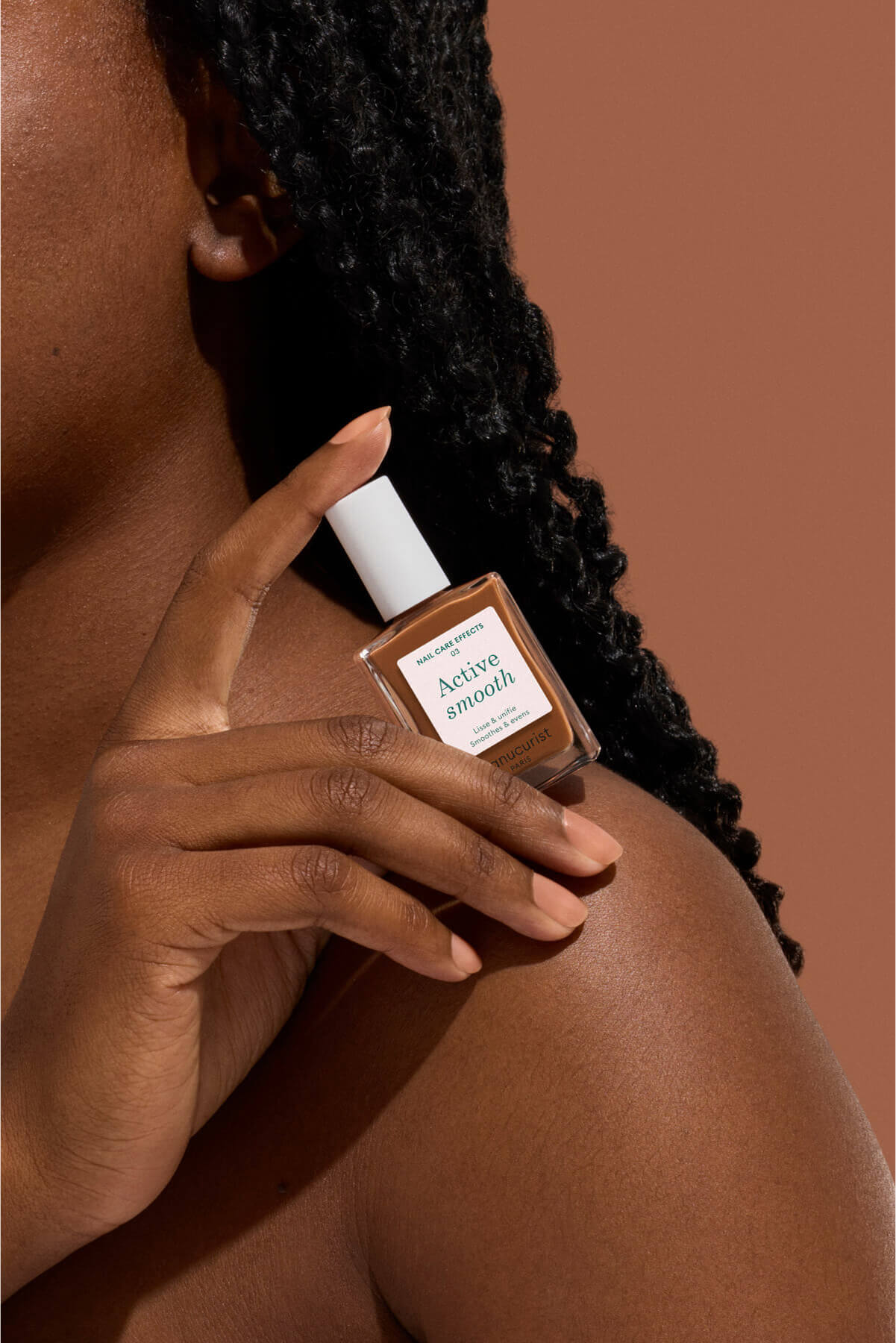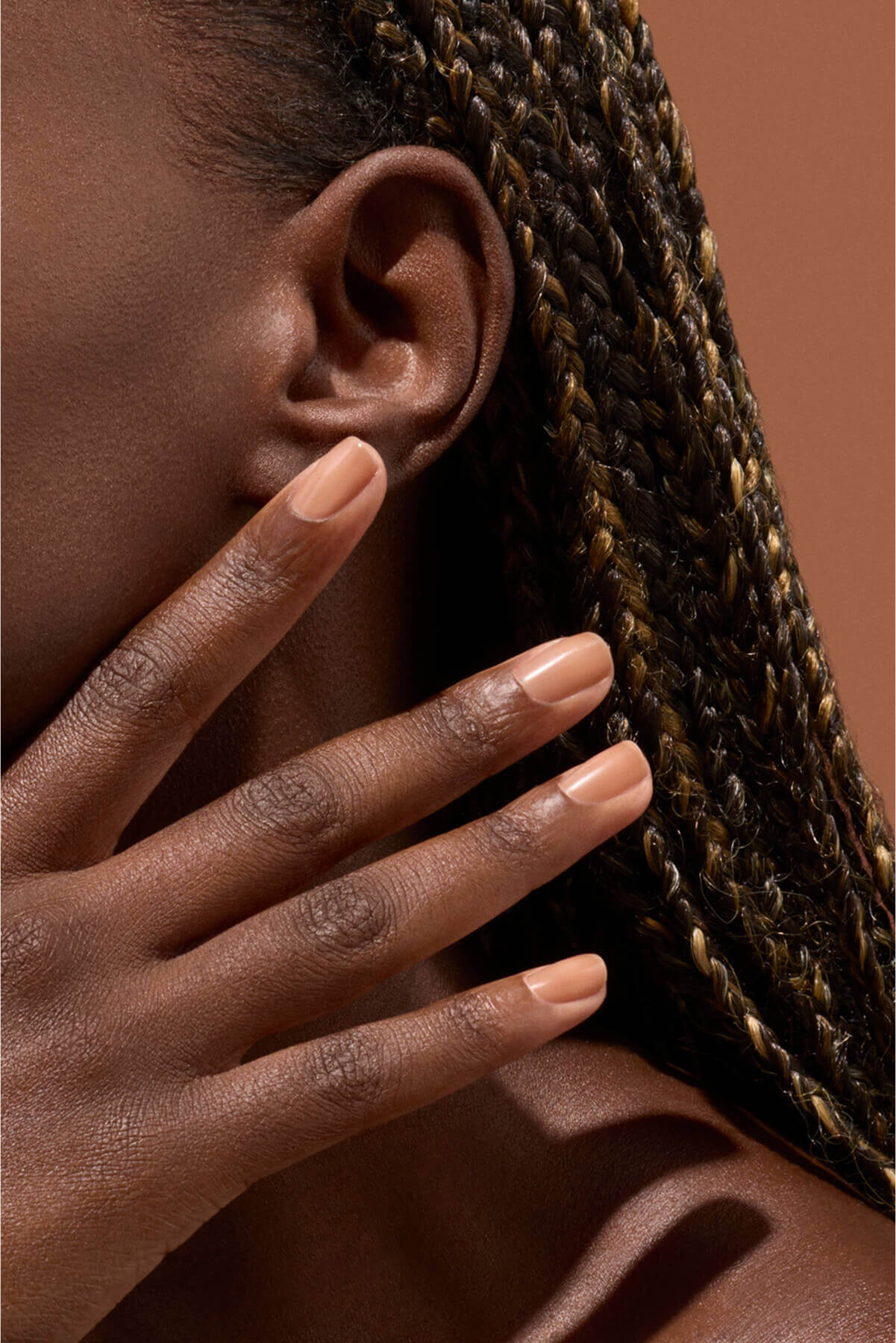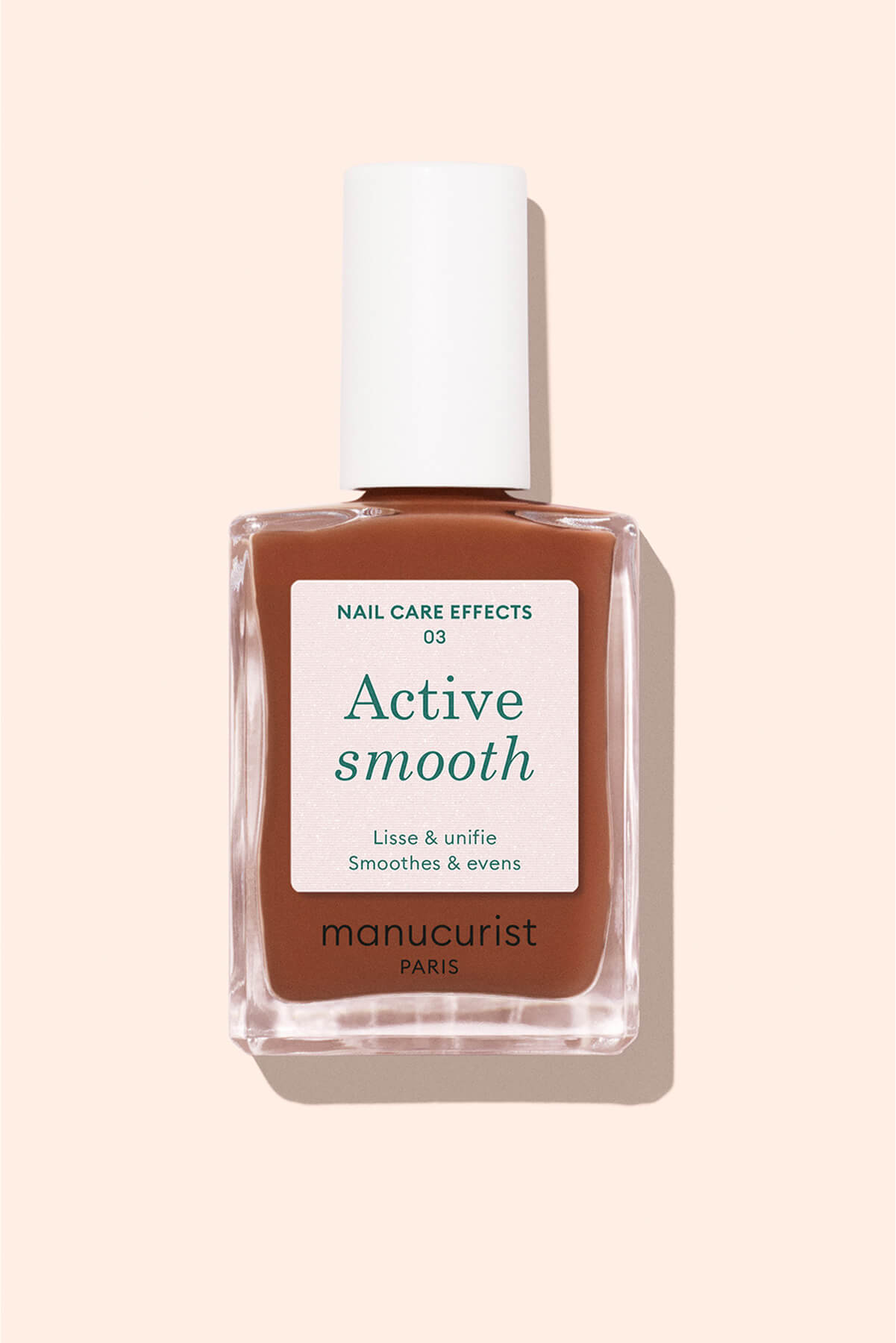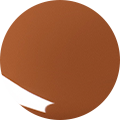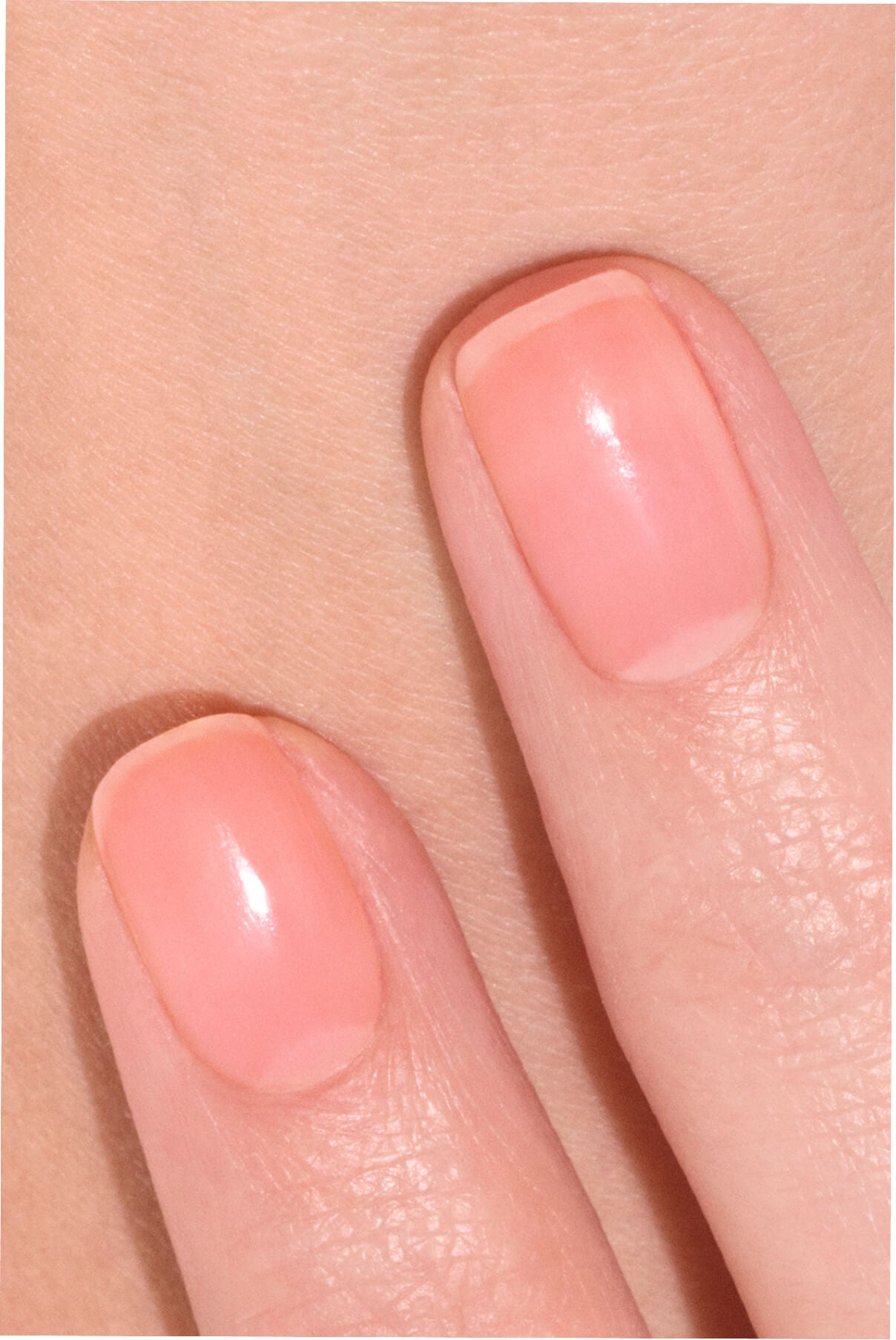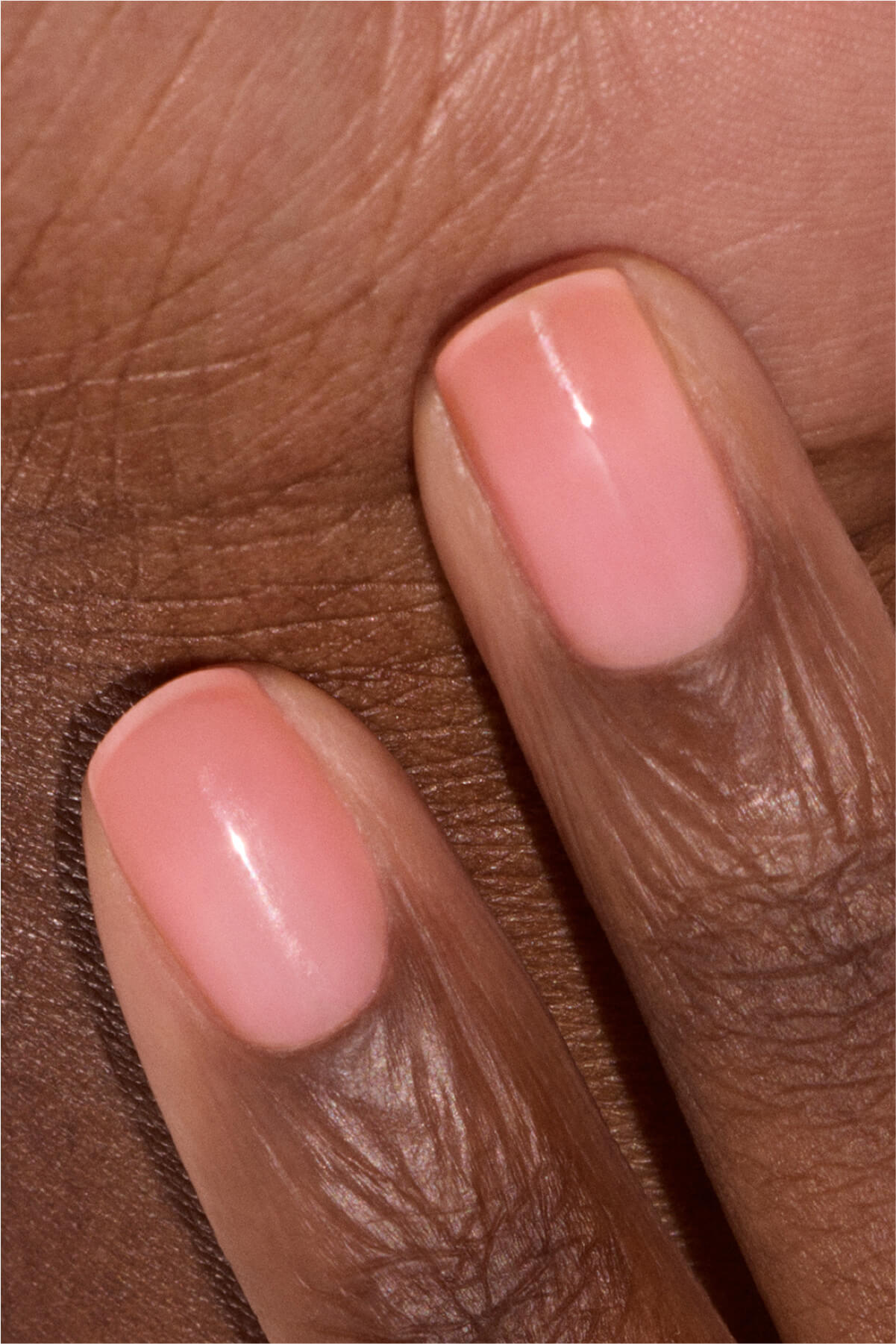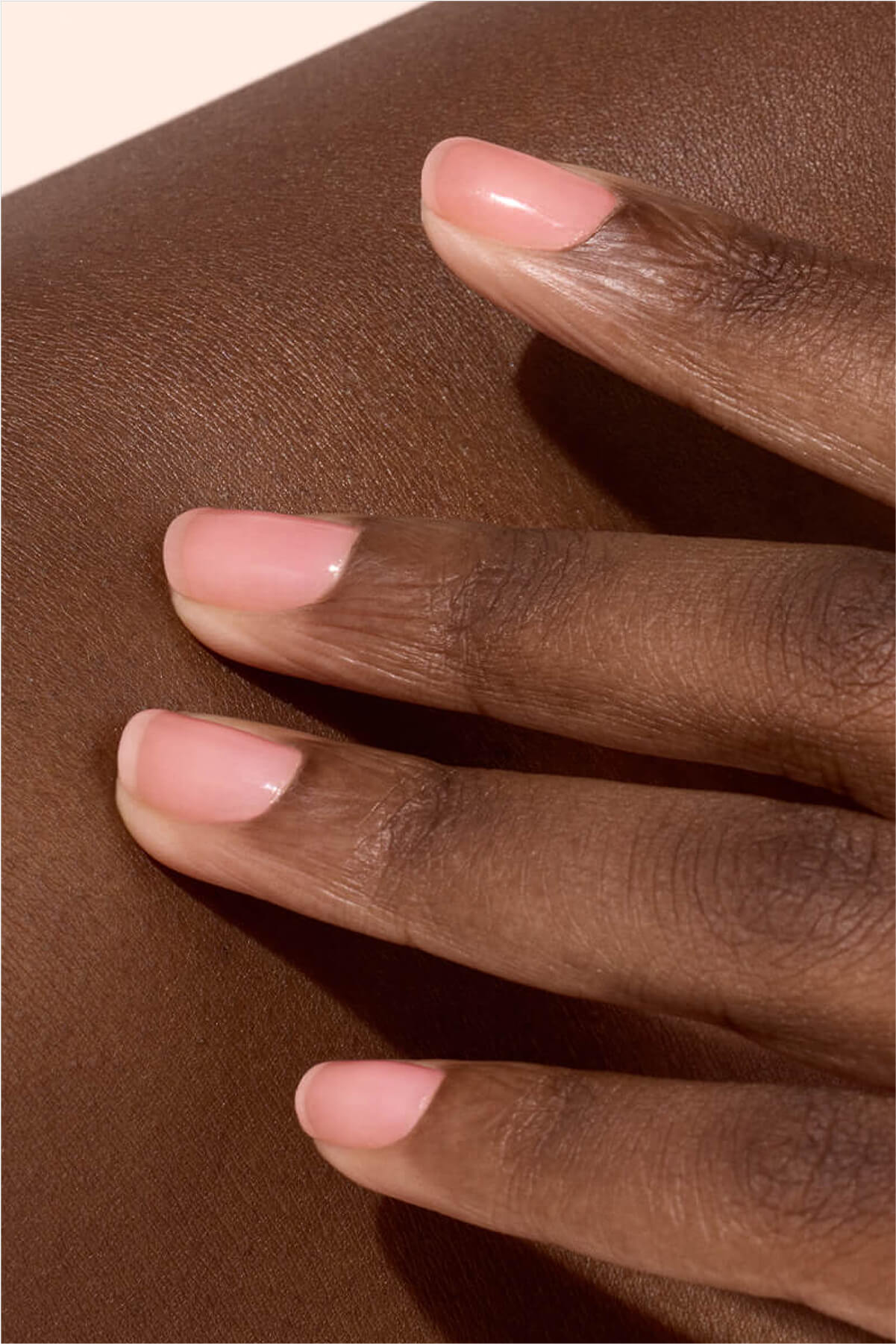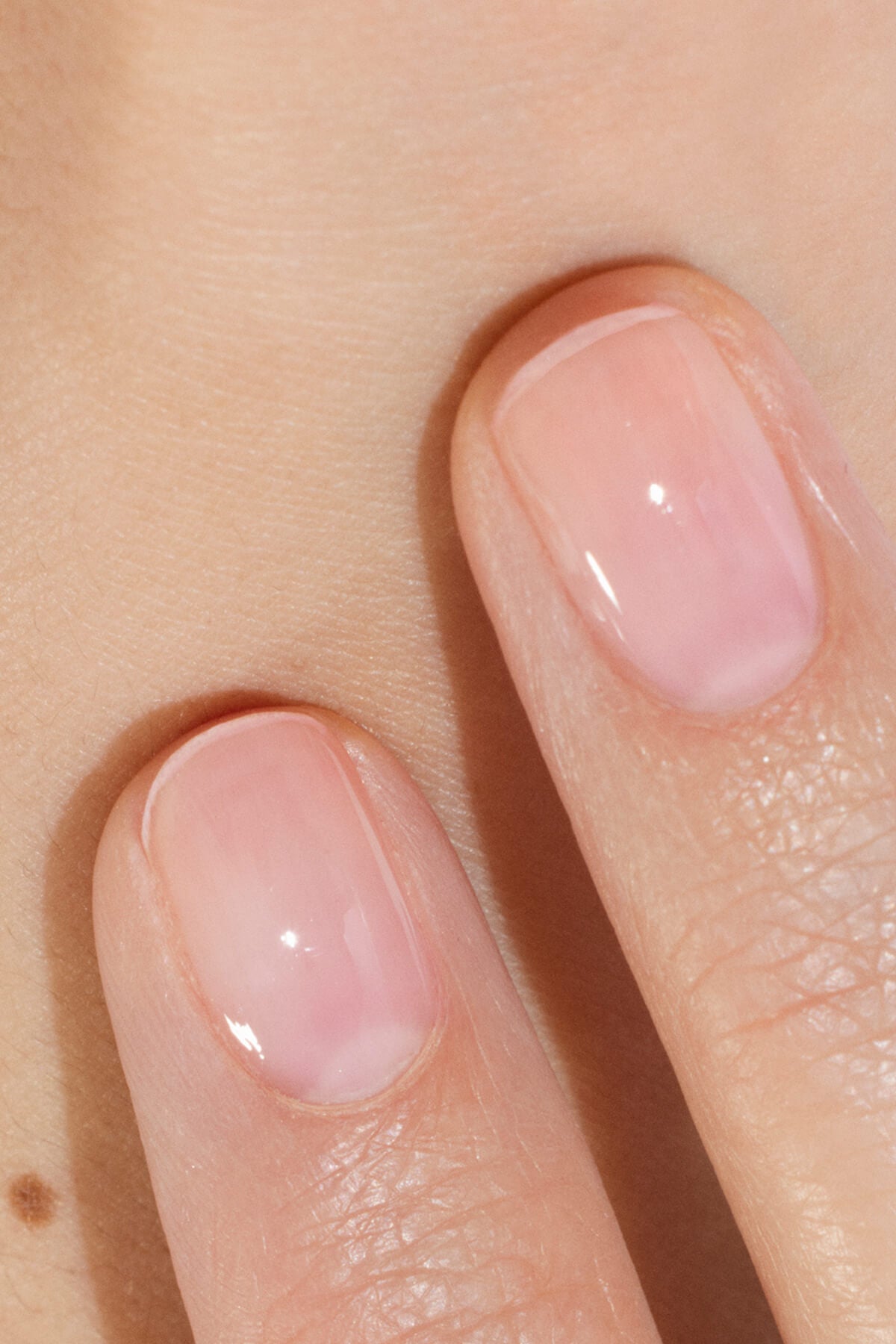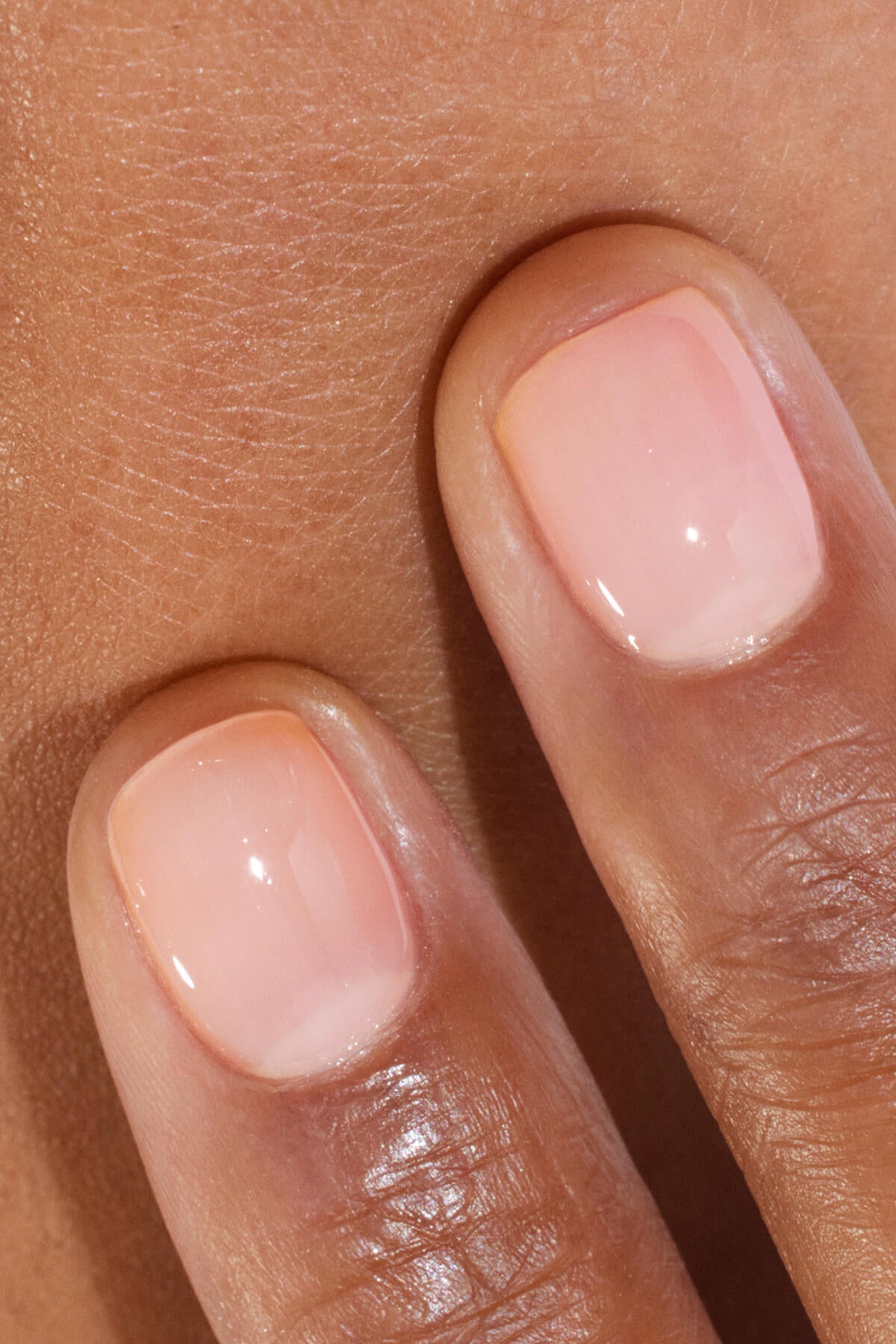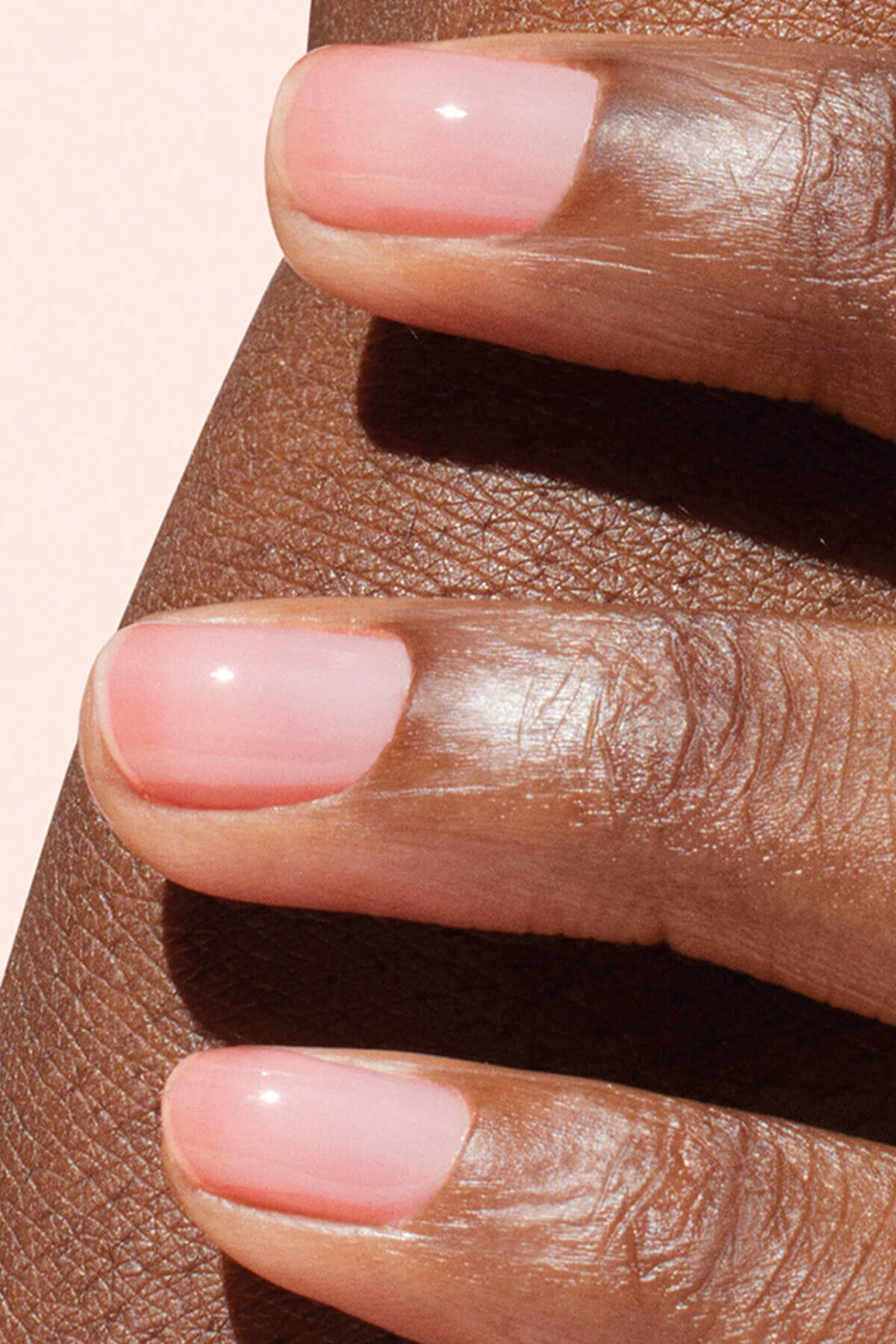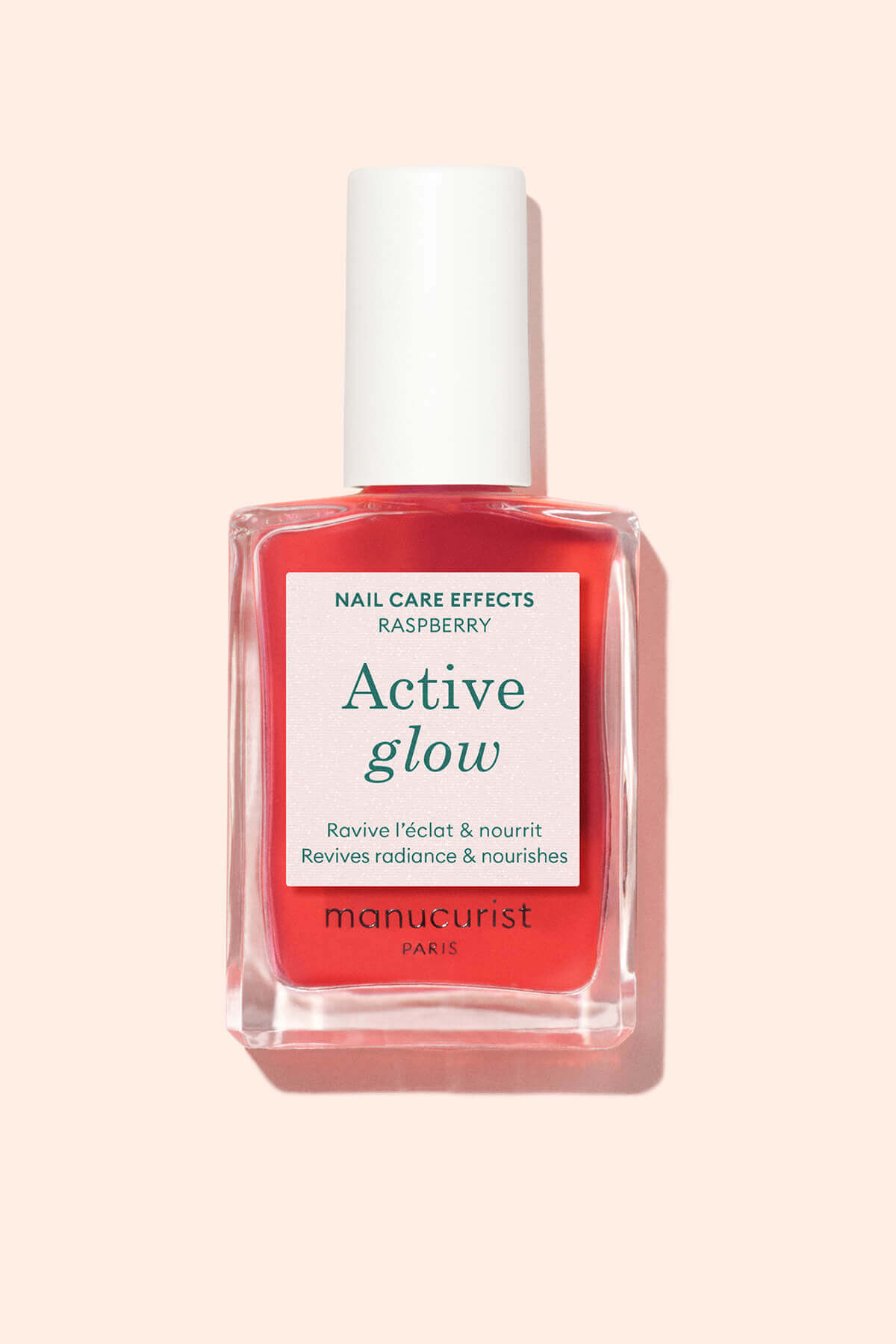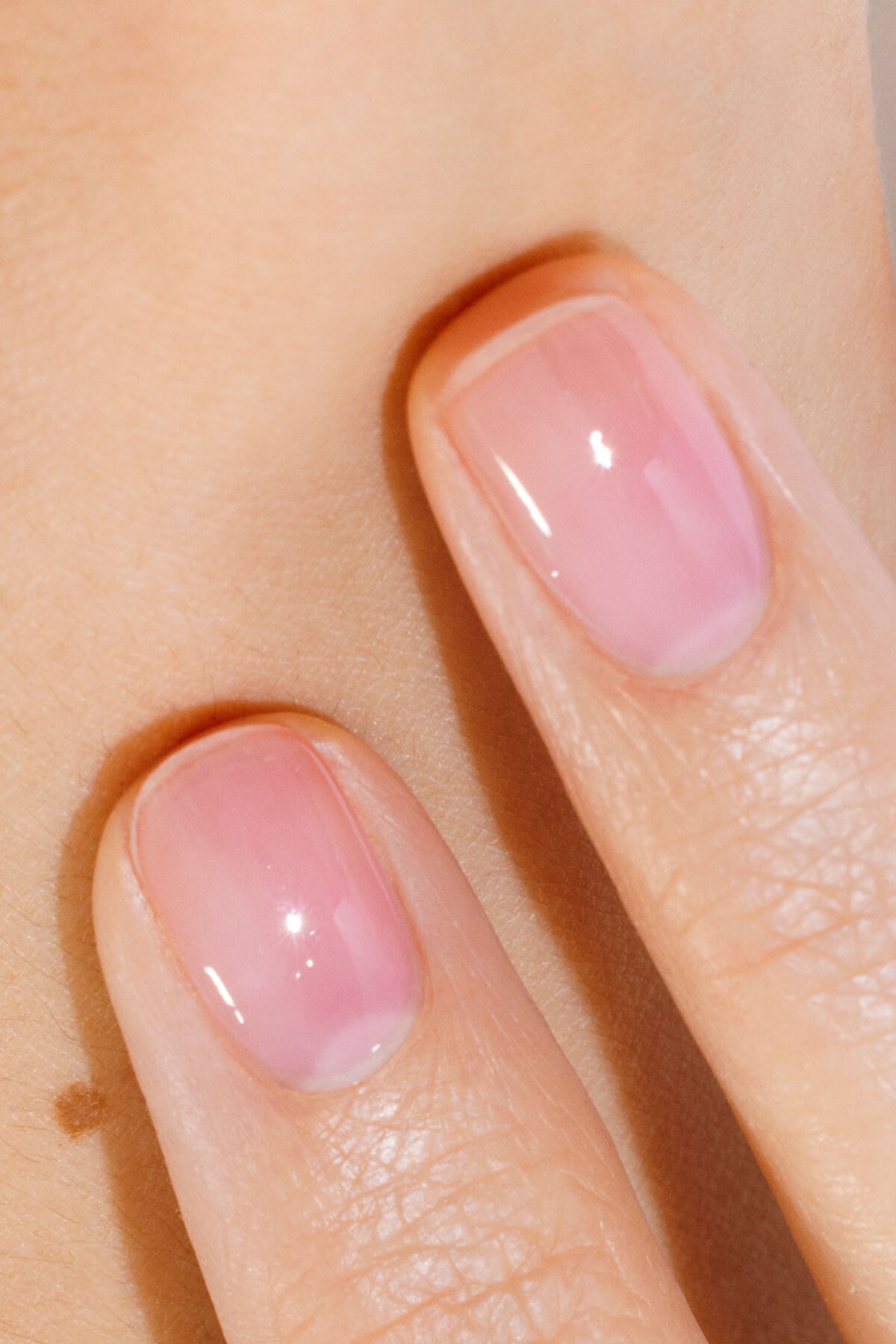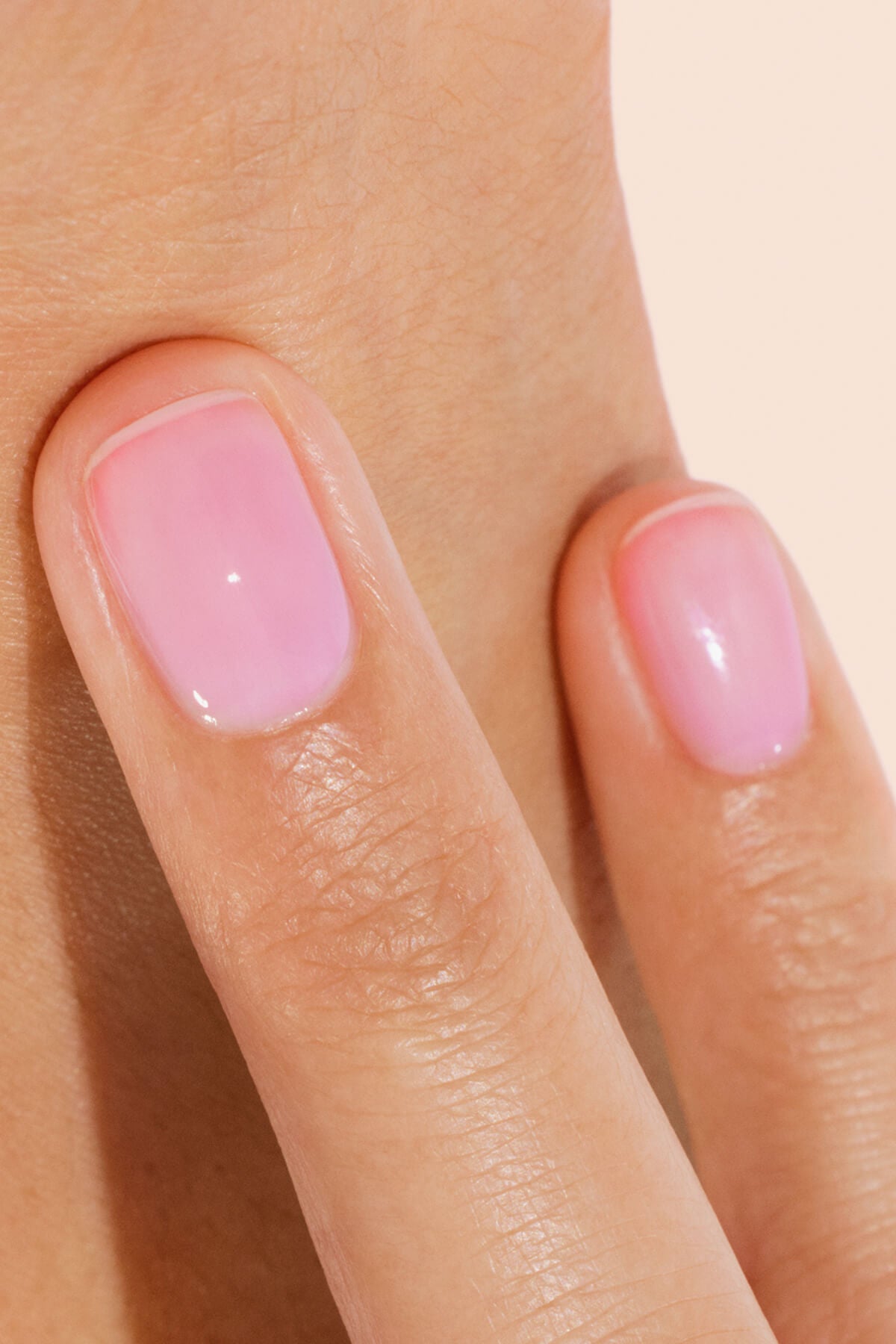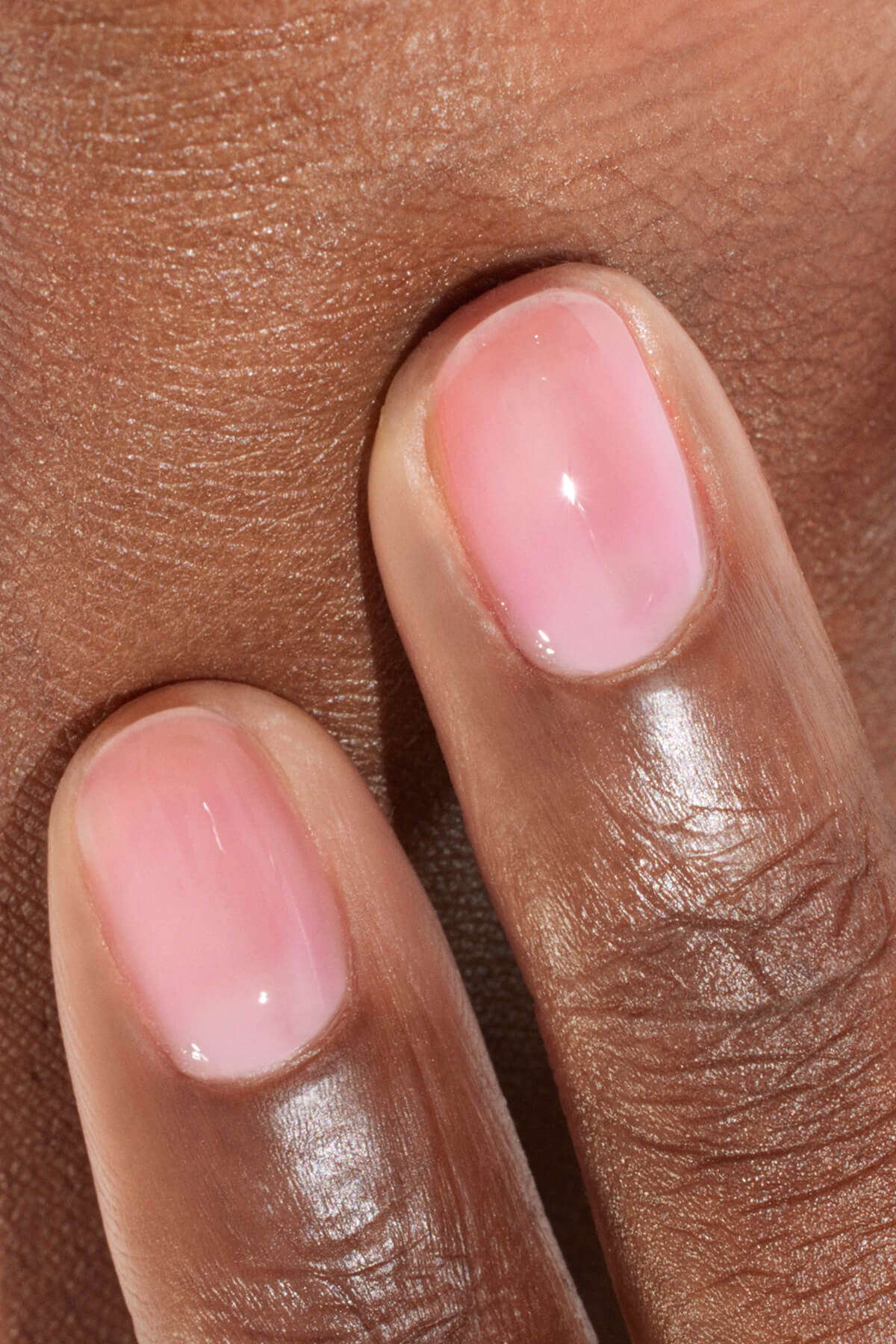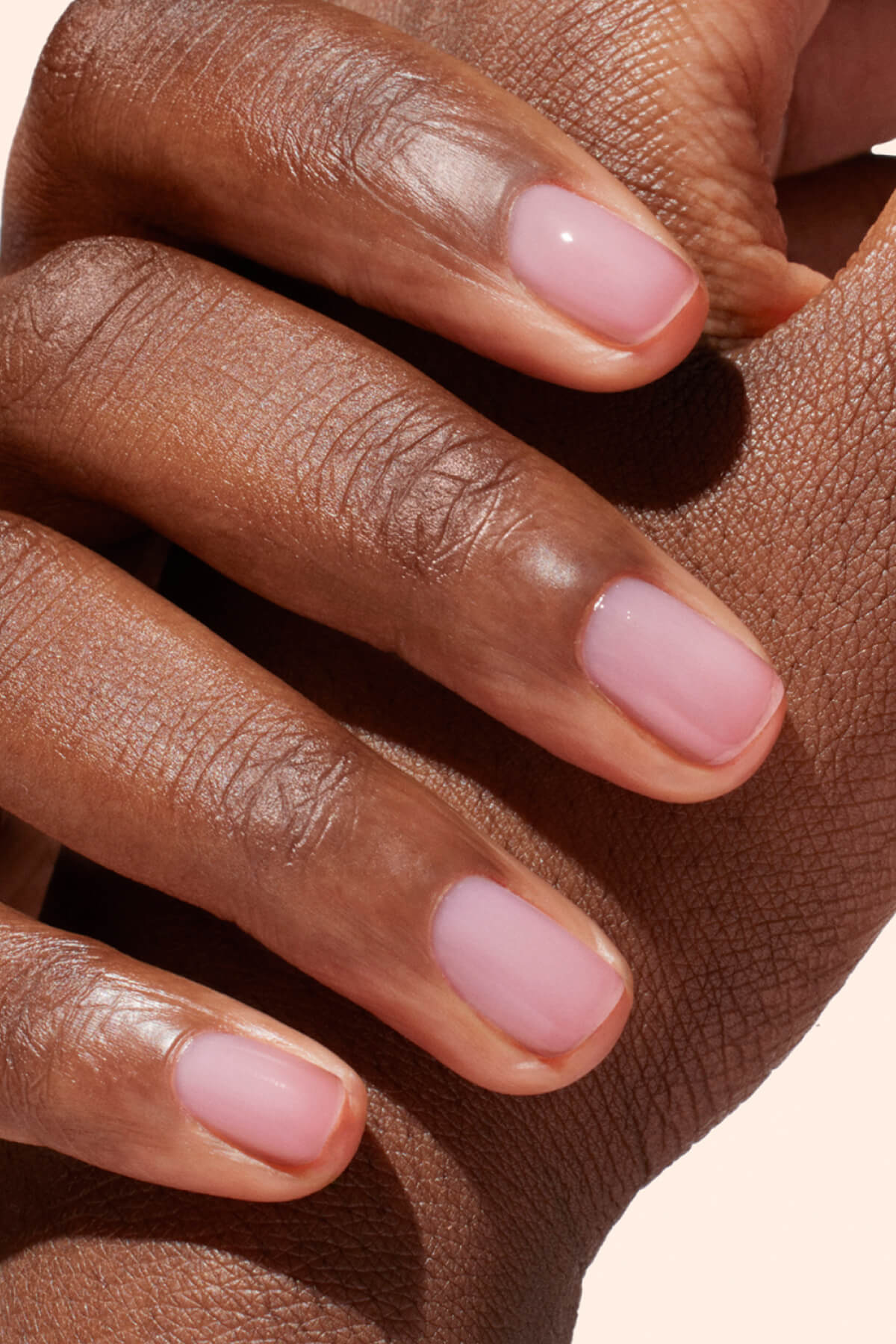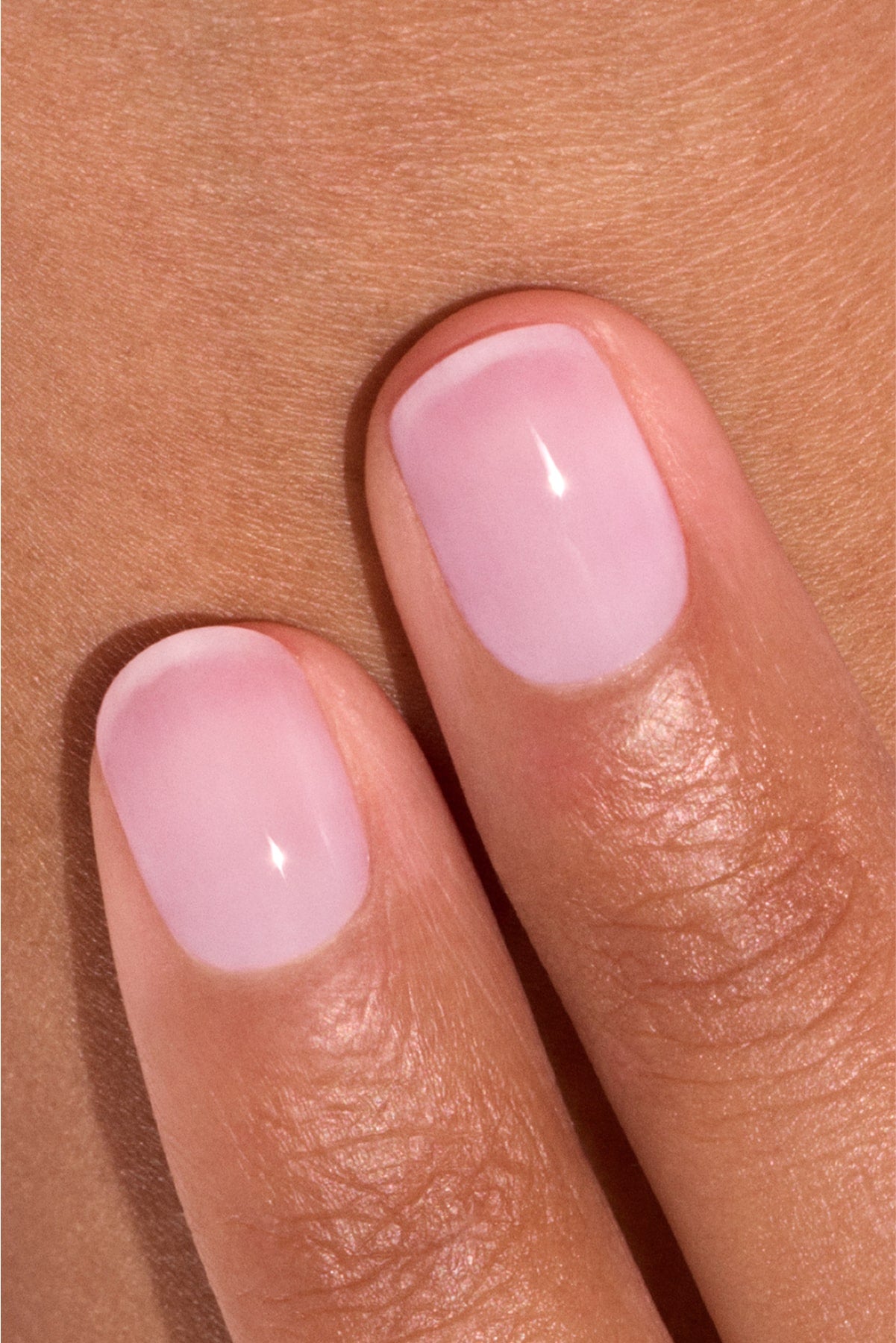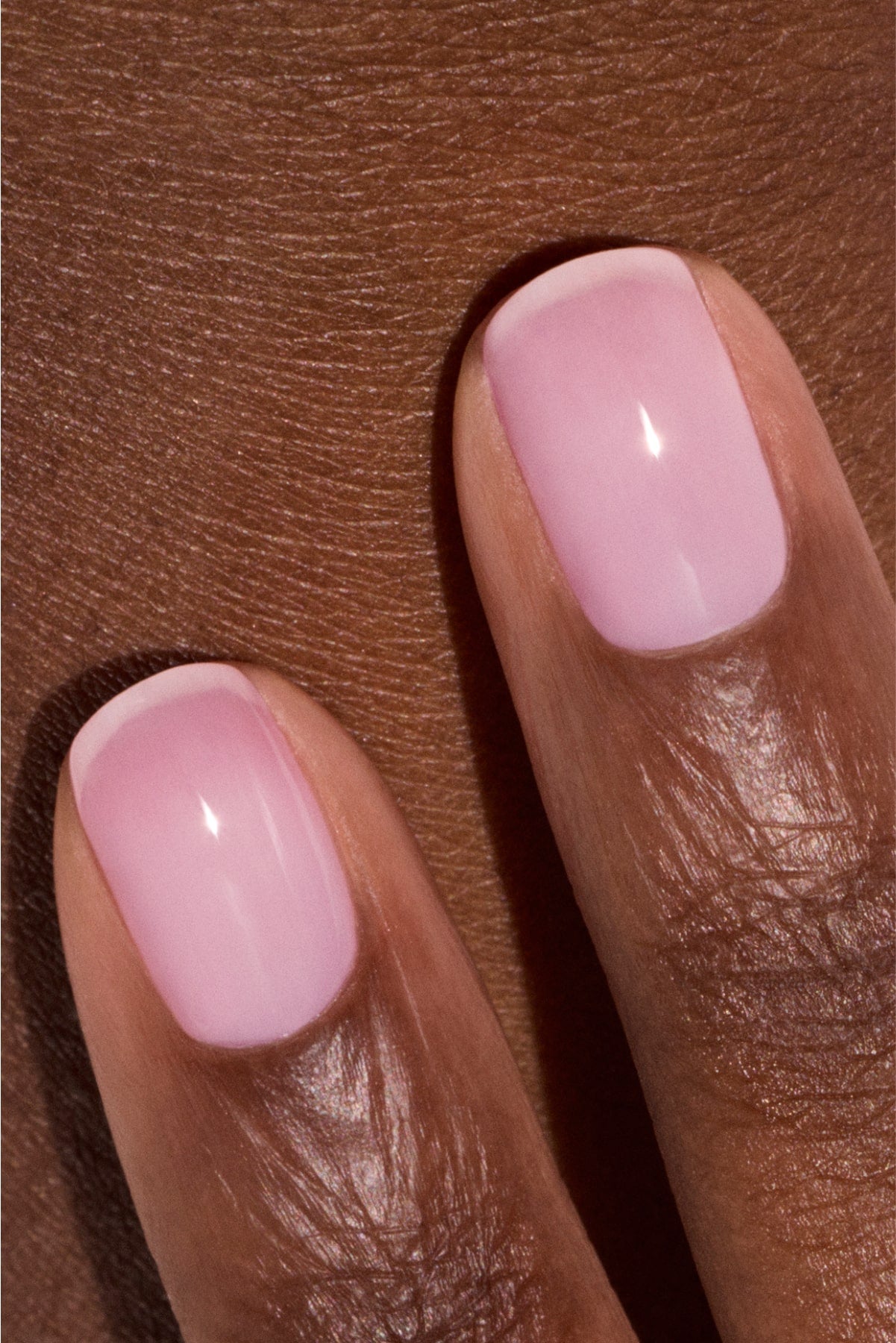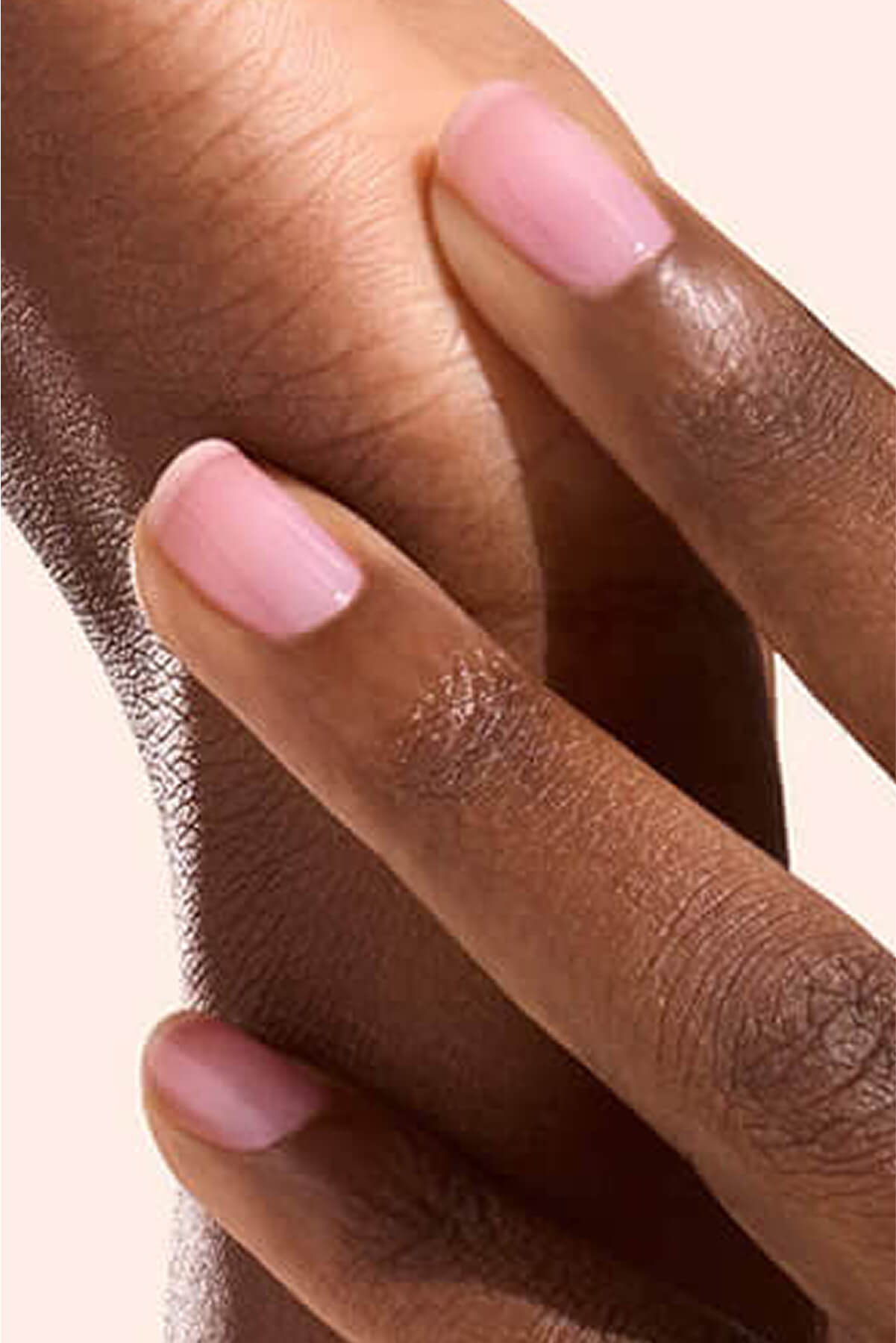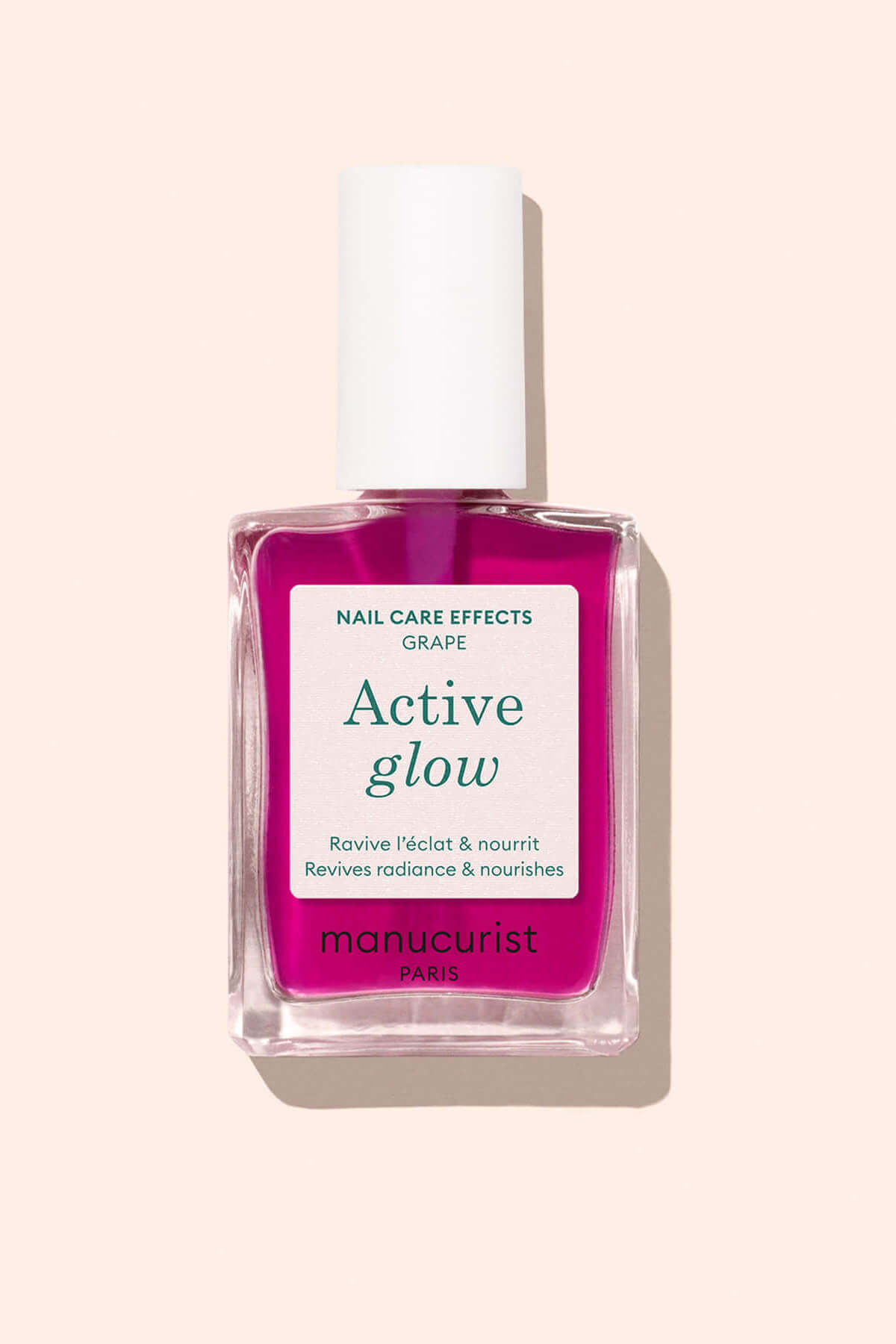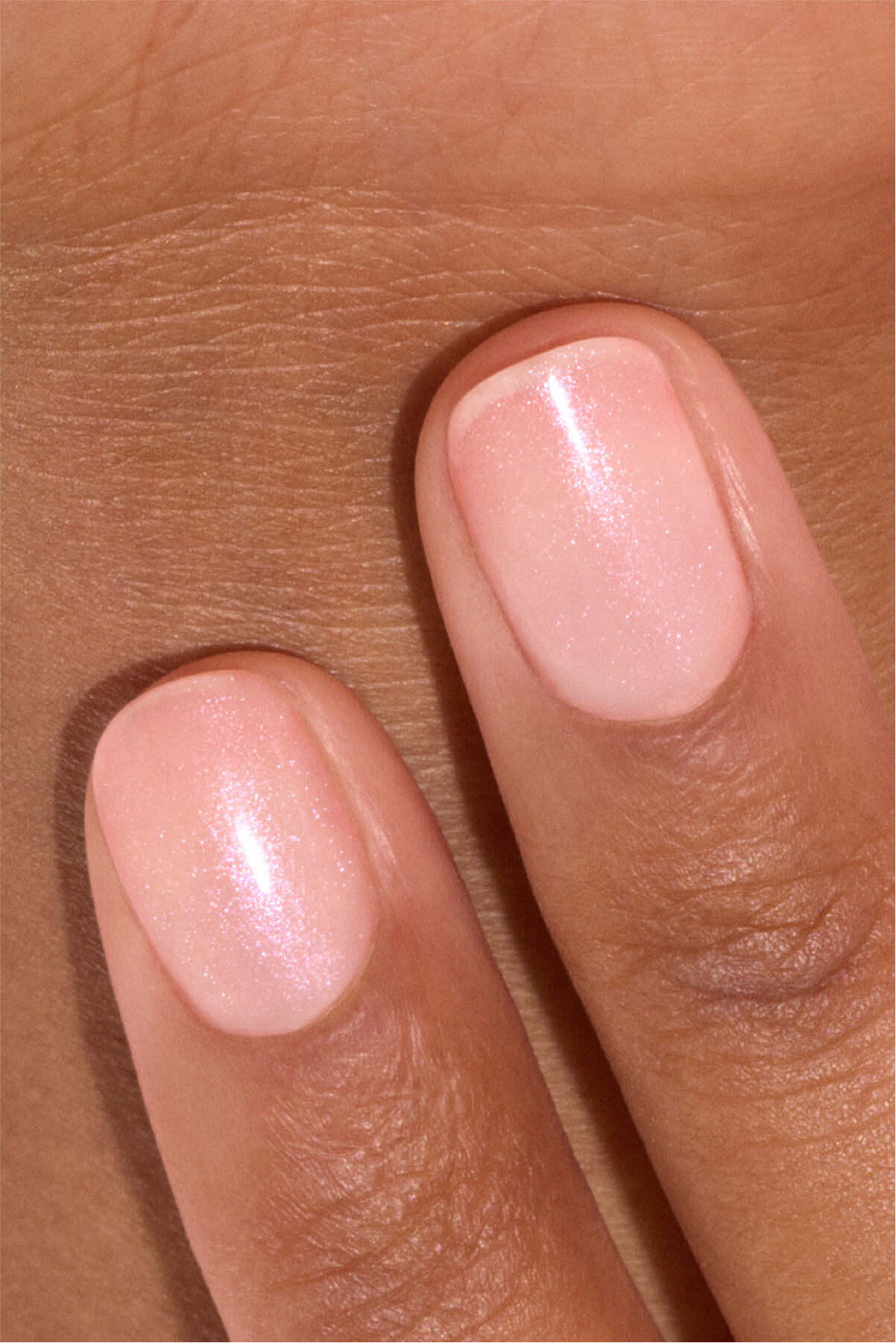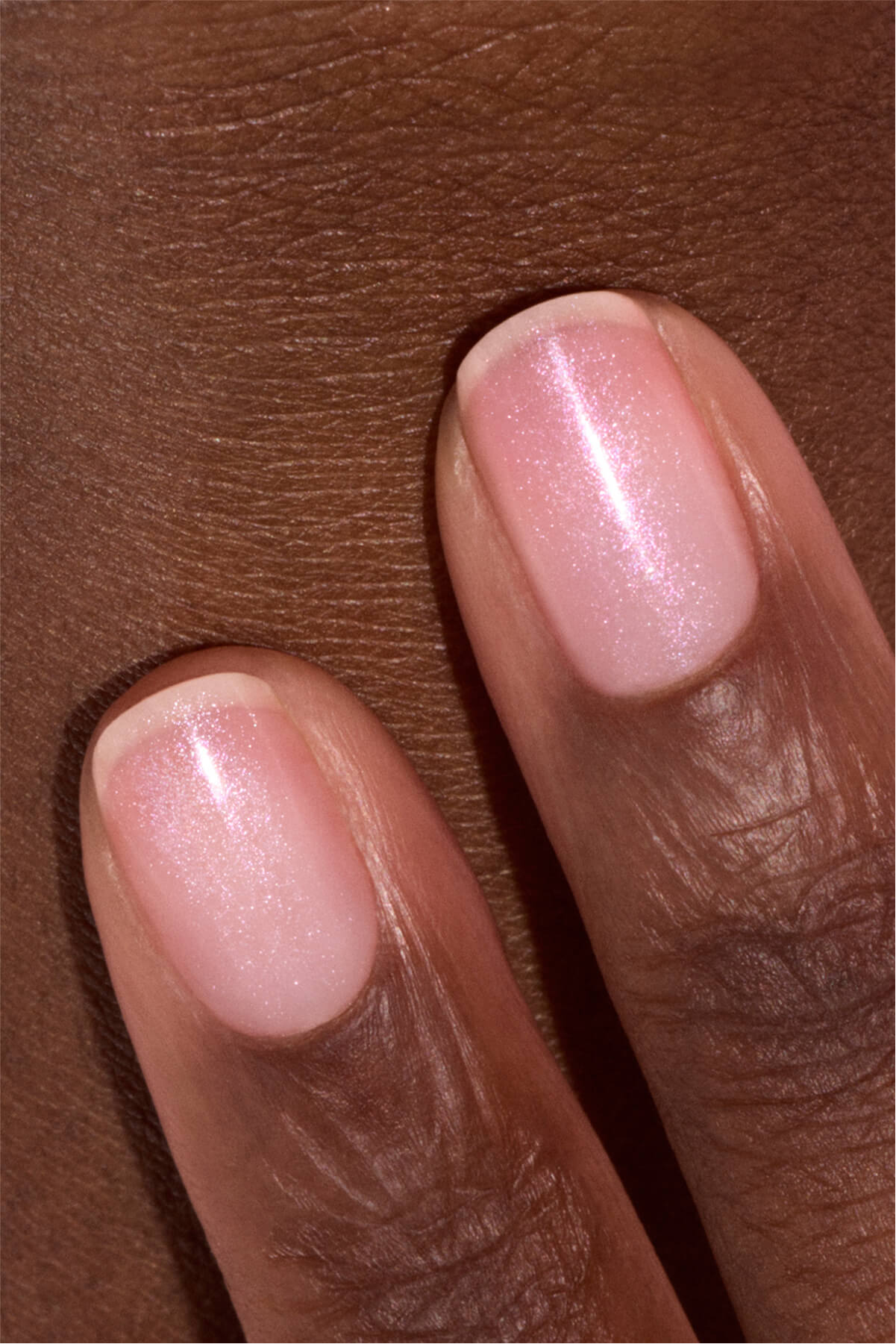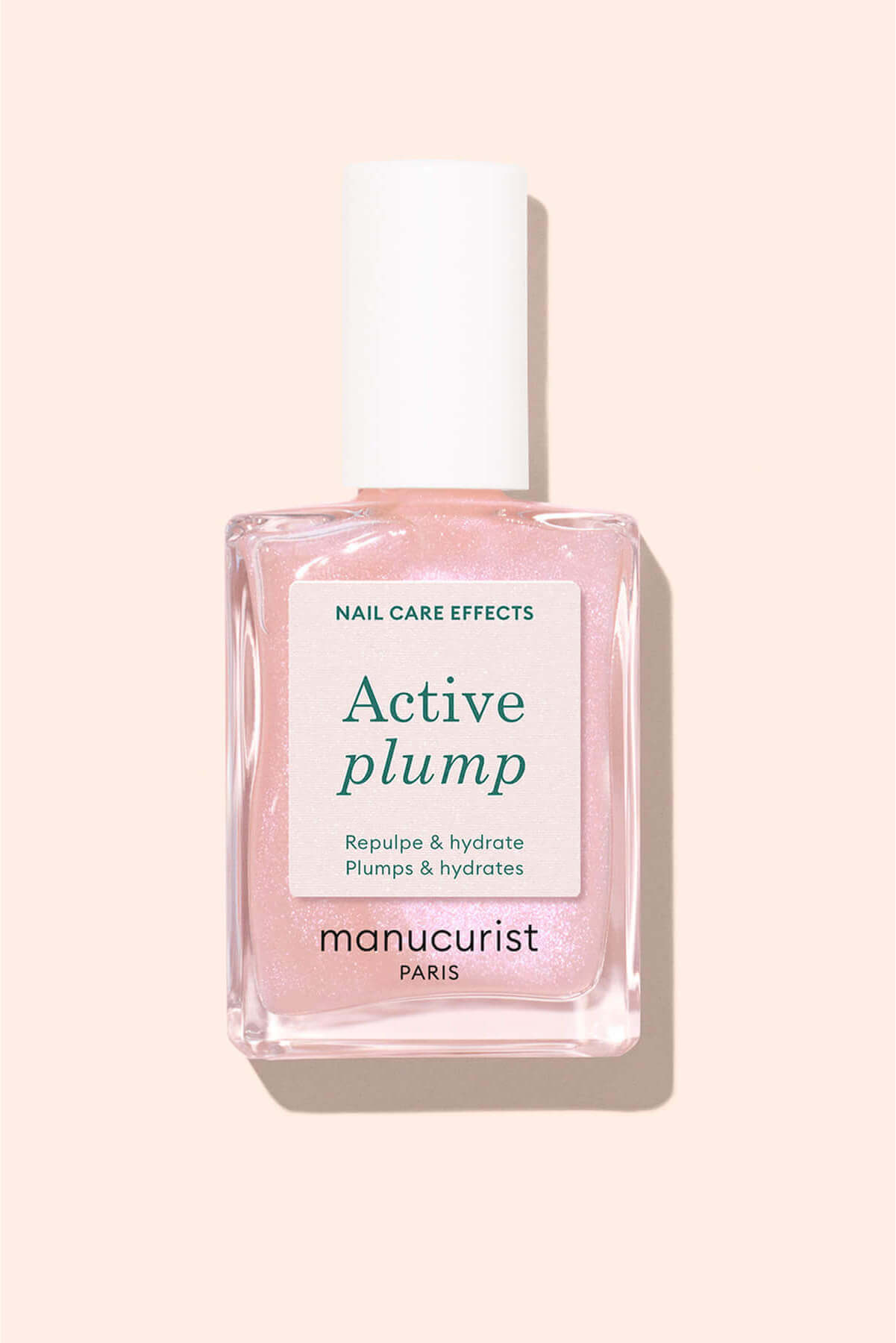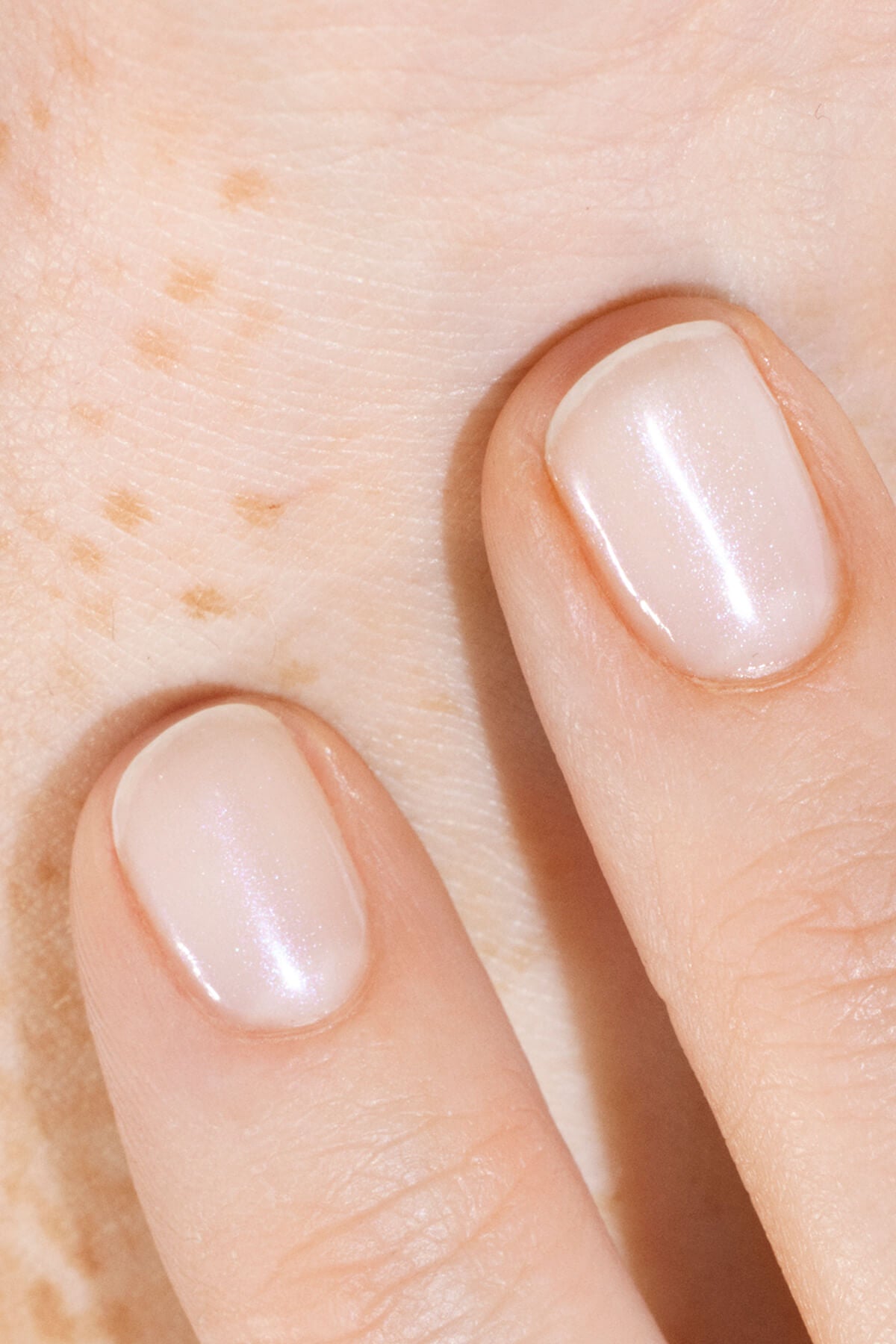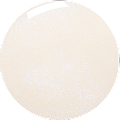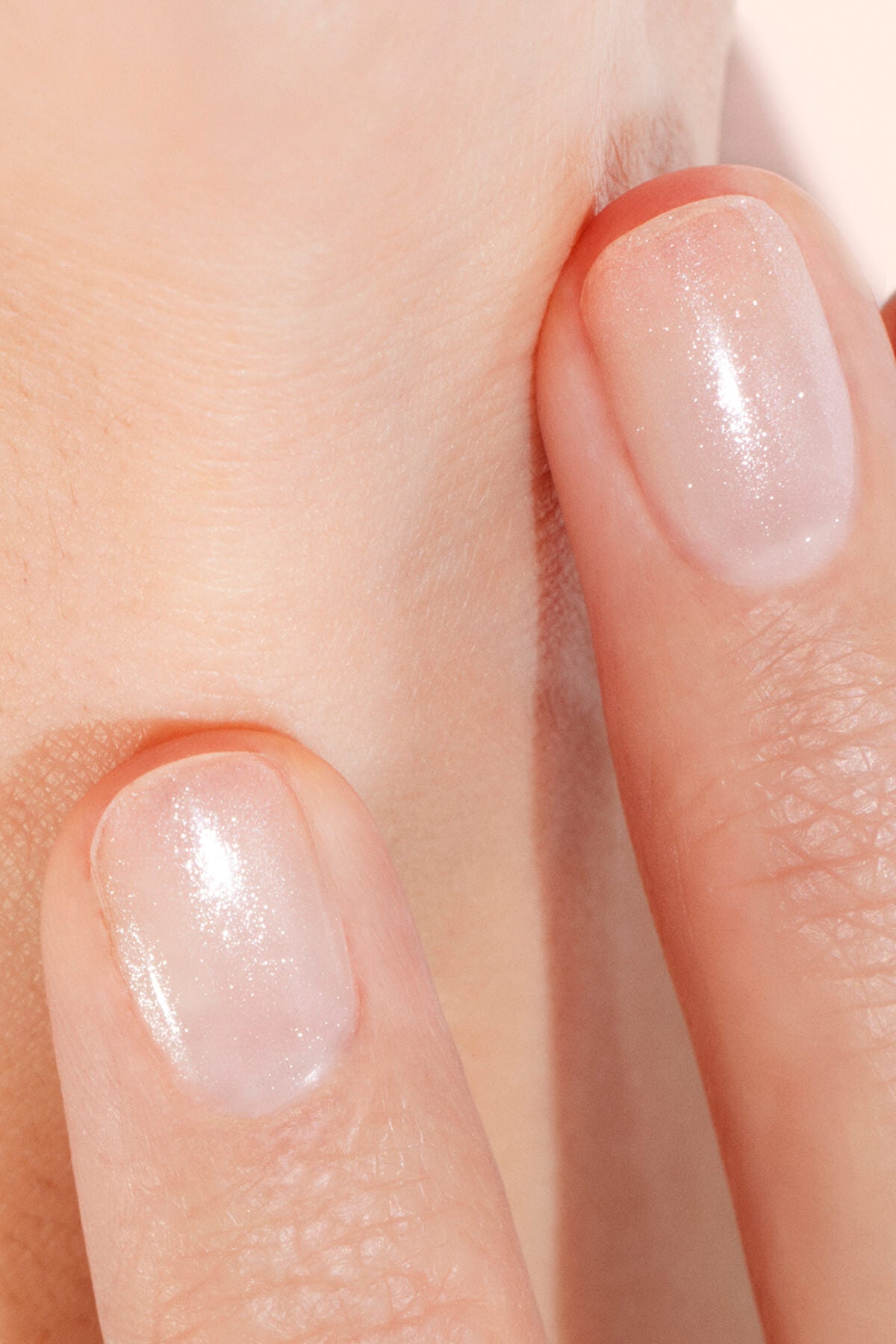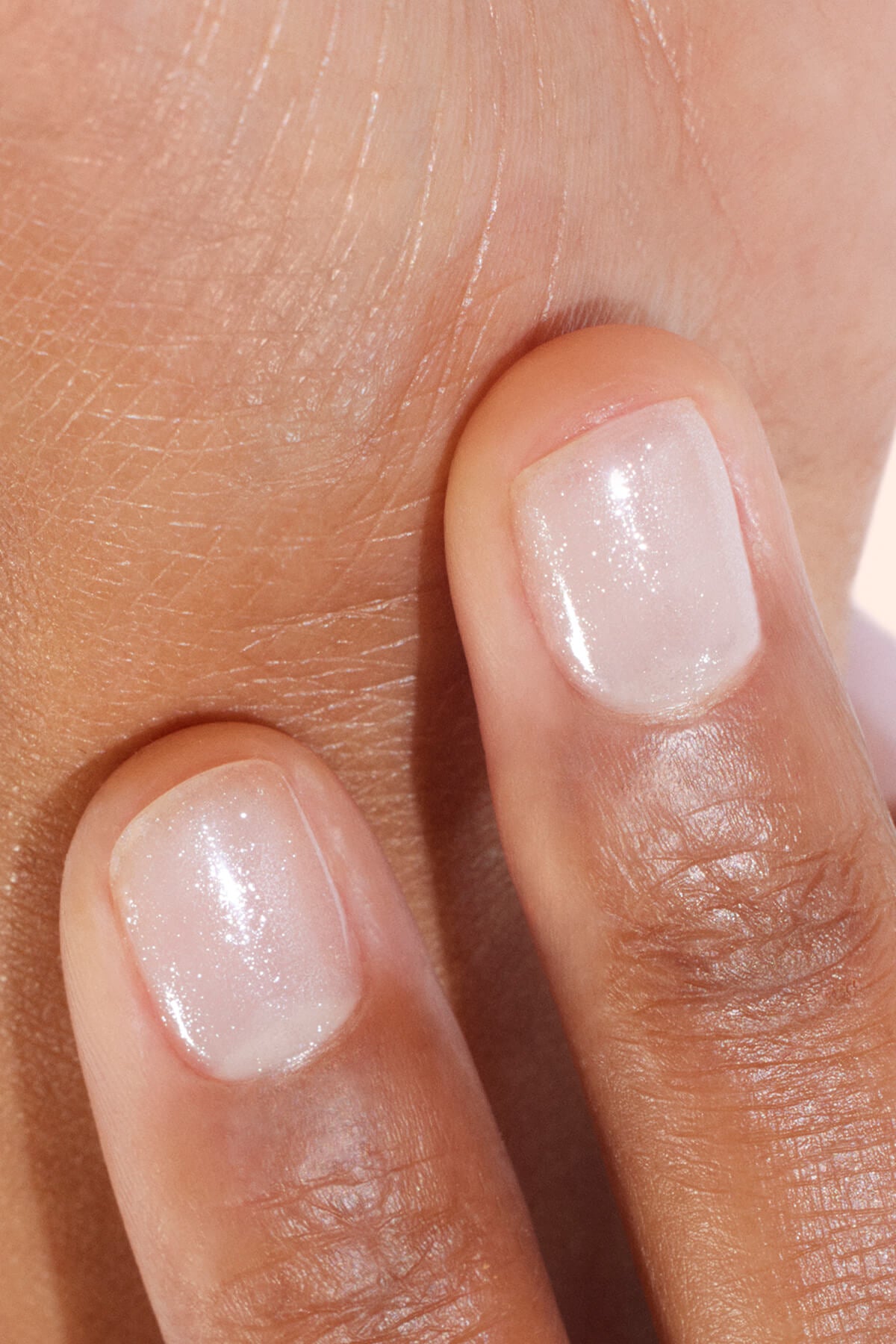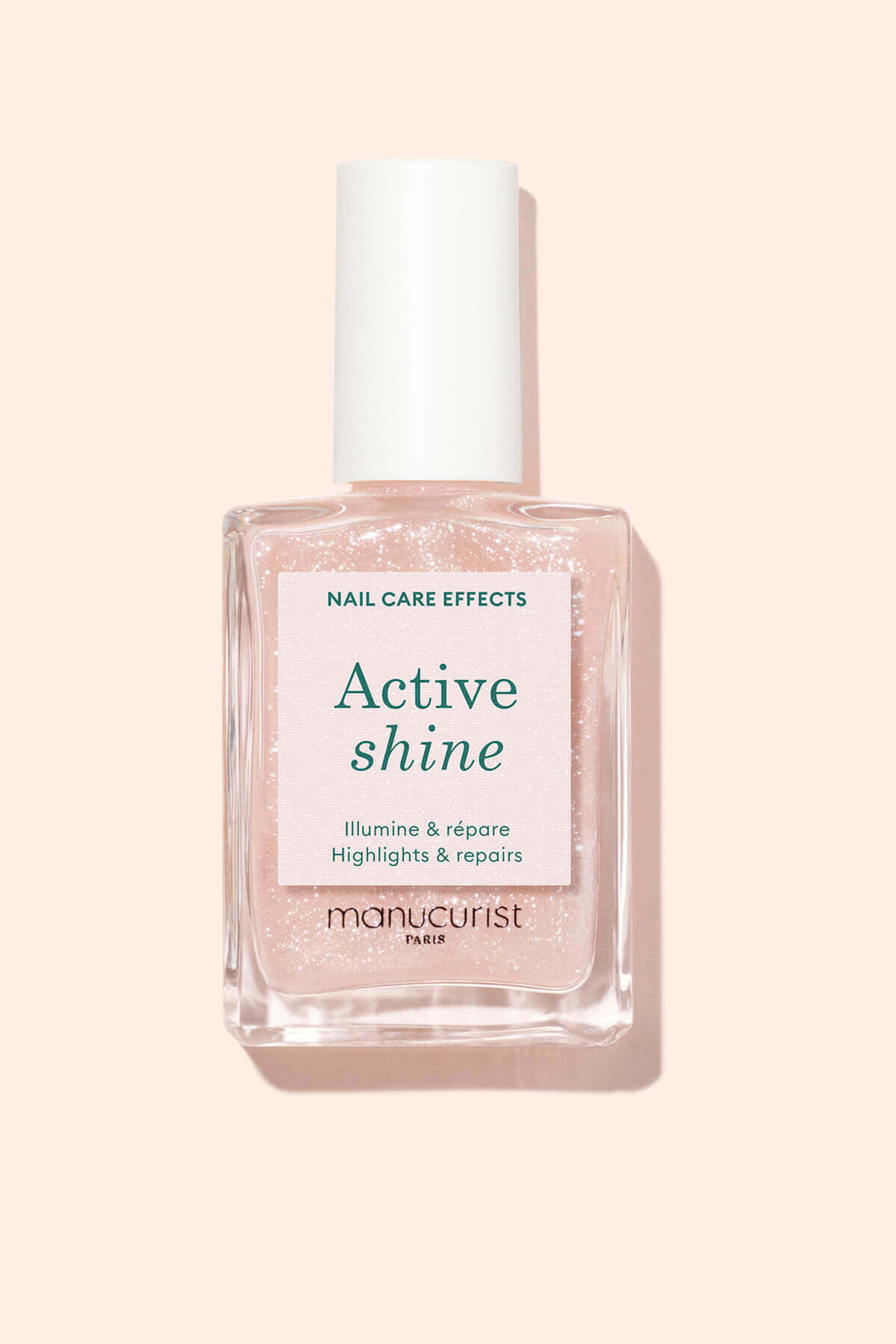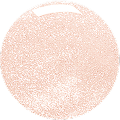They’re long, glossy and flawless for weeks on end. False nails have undeniable appeal, especially when you’re after perfectly polished hands. Between gel false nails for a natural glossy look and acrylic nails for added strength, it can be hard to choose. So, which technique is right for you? Let’s break down the gel vs acrylic debate and share our nail-friendly alternatives.
Acrylic nails
How does it work? Process and application steps
Acrylic (also known as acrylic resin) is made by combining a polymer powder and a monomer liquid, which hardens when exposed to air. Unlike gel, it doesn’t require a lamp, making it quick and convenient to apply. Here are the key steps:
- Nail prep: begin by filing and pushing back the cuticles, then cleanse the nail plate.
- Mix and apply: dip the brush into the monomer liquid, then into the acrylic powder to form a small, pliable bead of resin. This is placed on the nail (or on a tip) and shaped quickly before it hardens in the air.
- Dry and shape: once it’s set, the acrylic is filed and buffed to create a smooth, even surface.
- Finishing touches: finish with a glossy top coat or apply a colour polish of your choice!
Acrylic is sculpted in open air before being buffed, smoothed and polished.
(@silverstone_nails)
🏆The pros: unbeatable strength
This is the technique for seriously tough nails, virtually unbreakable. Acrylic creates a highly durable structure, perfect for protecting weak or brittle nails. Nail art lovers adore it: it lets you customise the shape, length and thickness to suit your style, creating the perfect canvas for one-of-a-kind designs. Another bonus: acrylic dries in the open air, no lamp needed, and can last up to three weeks without touch-ups.
👎The cons: a complex technique best left to the pros
Applying and removing acrylic nails takes genuine skill, so it’s usually best to visit a salon. That’s especially true as the chemical components involved in curing are quite volatile (which explains the strong smell), so proper ventilation and safety measures are a must. The result is often thicker and stiffer than gel, and can look less natural. And removal is no treat either: it requires filing or buffing to take off the acrylic, which can thin the nail plate and leave it vulnerable.
Acrylic manicures offer strength but removal can put your nails through the wringer. (@glamstudiobynora)
Gel false nails
While acrylic wins on strength, gel charms with its shine, flexibility and natural look, making it the most popular false nail technique. Here’s everything you need to know:
How does it work? Process and application steps
A salon favourite, gel is a photo-polymer resin applied in layers and cured under a UV or LED lamp. It’s used to extend nails using forms or tips, delivering a smooth, ultra-glossy finish. Here's how it’s done:
- Preparation: start by removing any leftover polish with a file or e-file. Shape the nails, push back cuticles and cleanse the nail plate with a nail cleanser or polish remover for better adhesion.
- Application: apply thin layers of gel, shaping as desired (on tips or forms). Each layer is cured under a UV or LED lamp to harden and fix the product.
- Shaping and filing: once cured, refine the shape using a file or drill for an even, natural result.
- Finishing touch: apply a top coat and cure one last time to lock in the manicure and add signature shine.

Gel nails are loved for their soft, glossy finish. (@pixabay)
🏆The pros: ready-to-use polish with an elegant finish
The winning feature of gel nails is their glossy, natural finish. The formula stays flexible, adapts to the natural shape of your nail and provides a long-lasting result. It also offers great versatility, making it ideal for lengthening or reshaping the nail. On the creative side, anything goes: French manicures, baby boomers, glass nails, pearl nails or full-on XXL nail art with 3D embellishments…

Flexible, durable and ultra glossy, gel is the perfect base for all your nail art ideas. (@bw.nails, @groovynails, @heygreatnails)
👎The cons: removal can damage the nail
Gel application is technical, and is best handled by a professional nail technician. Filing before application may weaken the nail plate. And removal comes with its own set of risks: usually done using a drill or acetone, it can sensitise the nail and disrupt its natural balance. You’ll also need a refill every three weeks to fill the gap left by nail growth.
Which manicure should you choose to protect your natural nails?
Green Flash™ Gel Polish: the alternative to false nails
Good news: you can achieve flawless nails without damaging them. The Green Flash™ Gel Polish by Manucurist combines glossy shine, long wear and respect for your natural nail. Underneath the polish, the Green Flash™ Vitamin Base Coat nourishes the nail from the very first application, helping maintain a perfect manicure for up to 12 days. With its vegan and up to 84% bio-sourced formula, Green Flash™ can be removed gently in one minute, without filing or acetone, and without harming your nails. In short, it offers a salon-worthy manicure at home, that's long-lasting and kind to your nails.
😉Stay tuned: we're working on a new top coat to extend the wear of your Green Flash™ Gel Polish up to 21 days!

A no-compromise manicure: long wear, shine and nail care with the Green Flash™ range.
How to repair your nails after false nails?
After gel or acrylic manicures, helping your nails recover is essential. Manucurist has developed three expert routines tailored to your nail’s level of fragility:
- Basic Routine is ideal for nails damaged by false nails or traditional gel polish. It combines the SOS Base and our Nourishing Cuticle Oil, our bestselling care duo to deeply nourish and repair.
- Starter Routine is your go-to for strengthening nails weakened by gel or acrylic. It includes the Nail Strengthening Serum to rebuild the nail plate and support natural keratin production, paired with the Nourishing Cuticle Oil and the SOS Mask, an overnight repairing treatment.
- Ultimate Routine is your intensive recovery option. It includes all previous products plus the Nourishing Nail Pen, delivering intense, continuous hydration. In just two weeks, nails are visibly stronger and restored. It’s a full detox cure for nails recovering from aggressive manicures.

After a harsh manicure, restore your nails with one of our three expert care routines.
So, gel, acrylic or clean manicure? If you’re into sleek, long-lasting nails, both gel and acrylic deliver a flawless result. For soft nails needing extra protection, acrylic adds strength and durability. If you're after a natural finish with staying power, gel nails are your best bet. But if your nails crave a gentler, more responsible option that’s just as glossy, the Manucurist Green Flash™ manicure ticks all the boxes. The choice is yours!
Frequently asked questions
Can you apply false nails at home?
Absolutely, as long as you're properly informed and equipped. Besides the basic prep tools (file, steel cuticle pusher, nail cleanser), you’ll need capsules, a builder gel, a UV/LED lamp and a top coat for gel nails. For acrylic nails, you’ll need acrylic powder, monomer liquid, a suitable brush and a top coat for finishing. Beginners should choose a nail file over a drill, whether for application or removal, as improper use of a drill is a common cause of nail damage. Also, be sure to follow drying times carefully, especially when using a UV/LED lamp.
What’s the long-term impact of gel or acrylic nails on natural nails?
Over time, false nails can weaken the natural nail plate, particularly if applied and removed frequently without proper care in between. Acrylic, due to its chemical composition, can be particularly sensitising and requires a lengthy soak in acetone plus filing or buffing that can harm the keratin. Gel, although less robust than acrylic, also requires filing for removal, which can thin and weaken the nail. The result: nails may become soft, ridged or dehydrated with slower growth.
What’s the best manicure for protecting natural nails?
If you're after a solution that’s kind to your nails while delivering shine and staying power, go for a bio-sourced polish that’s easy to apply and remove with no damage. Unlike acrylic or gel, options like Green Flash™ offer a long-lasting manicure routine that nourishes the nail beneath the polish. This LED polish gives you all the benefits of gel, with simple three-step application, express lamp drying and one-minute removal with no acetone or filing. The result? Beautiful nails for 12 days and beyond.




